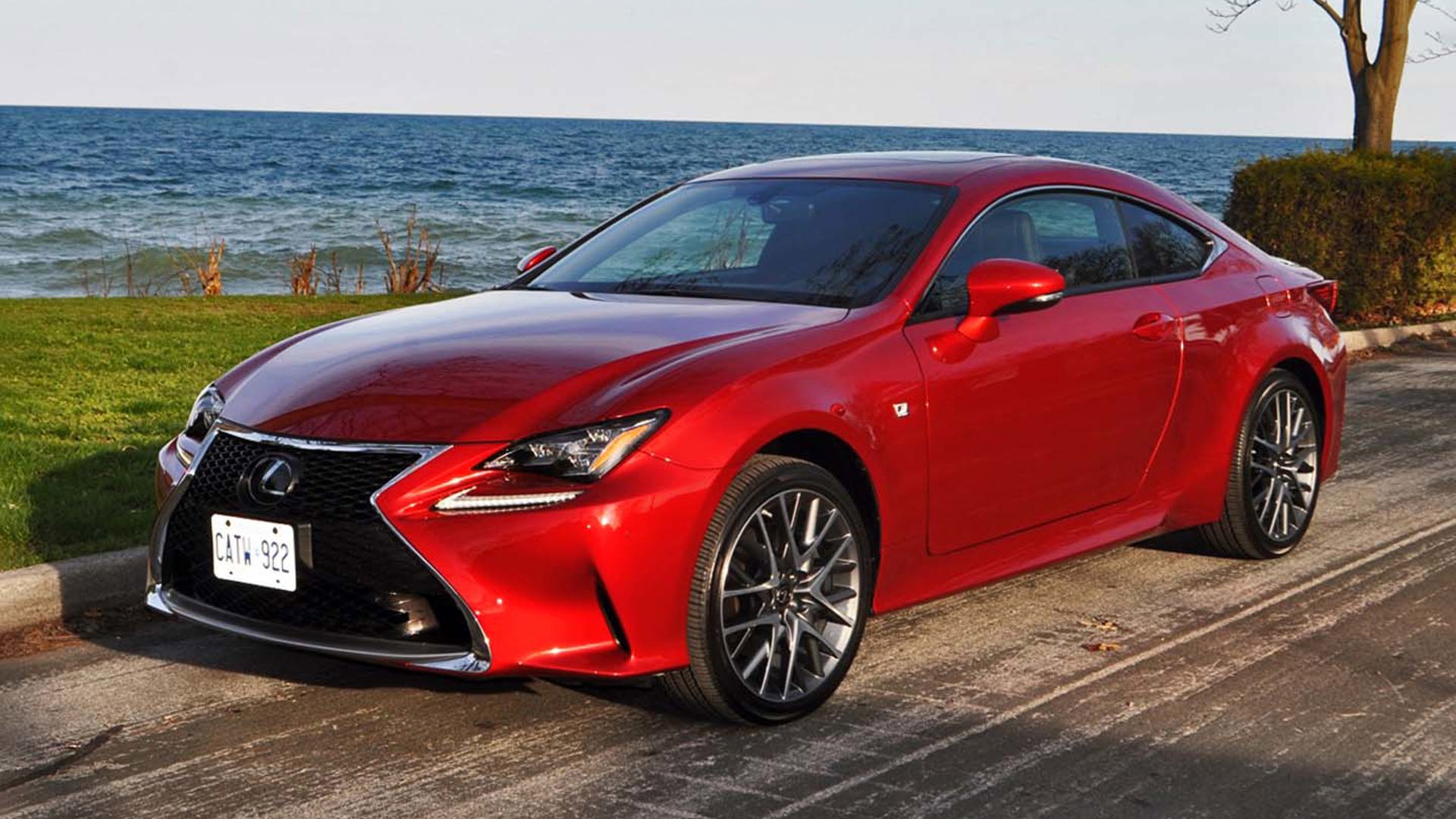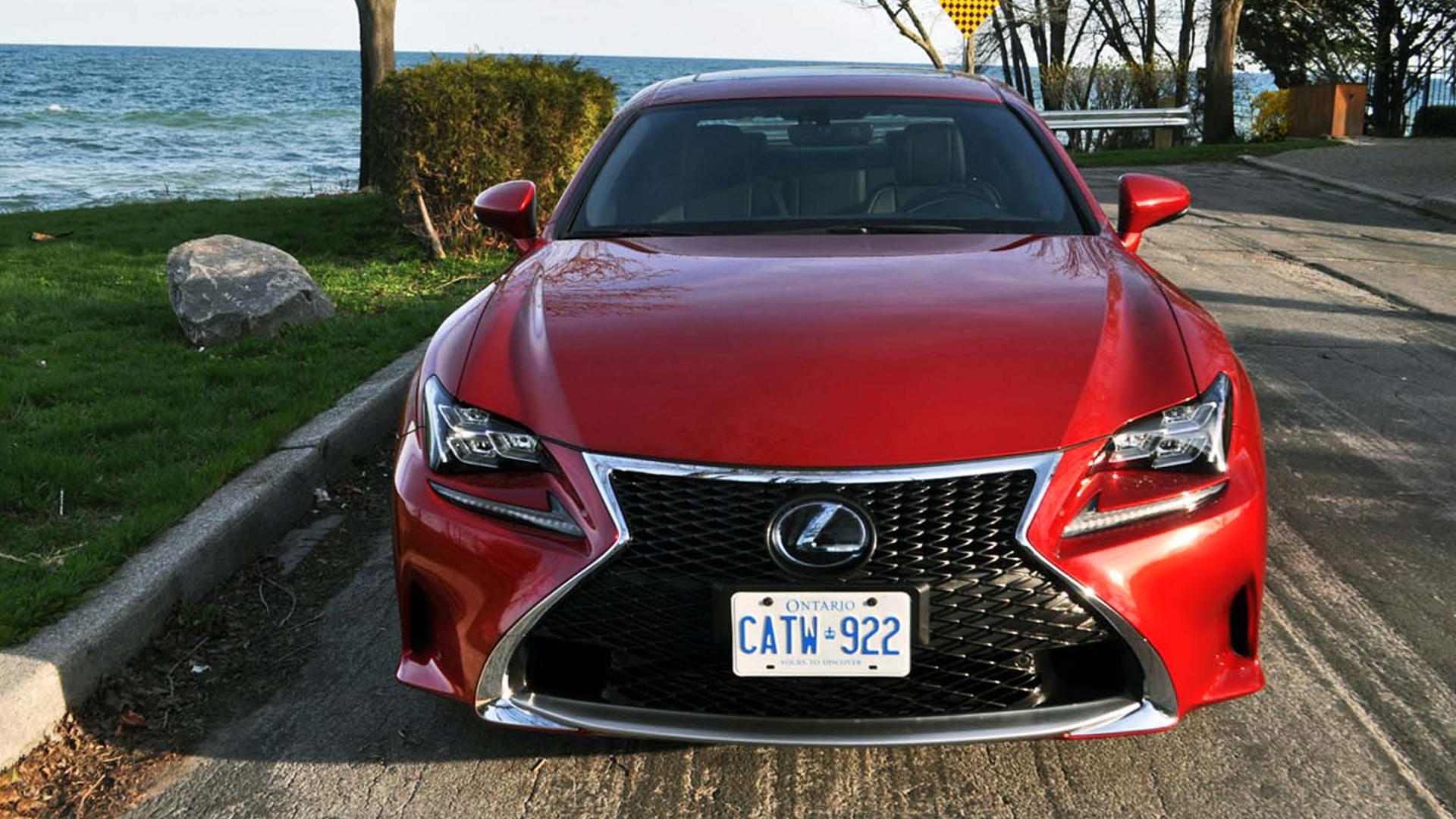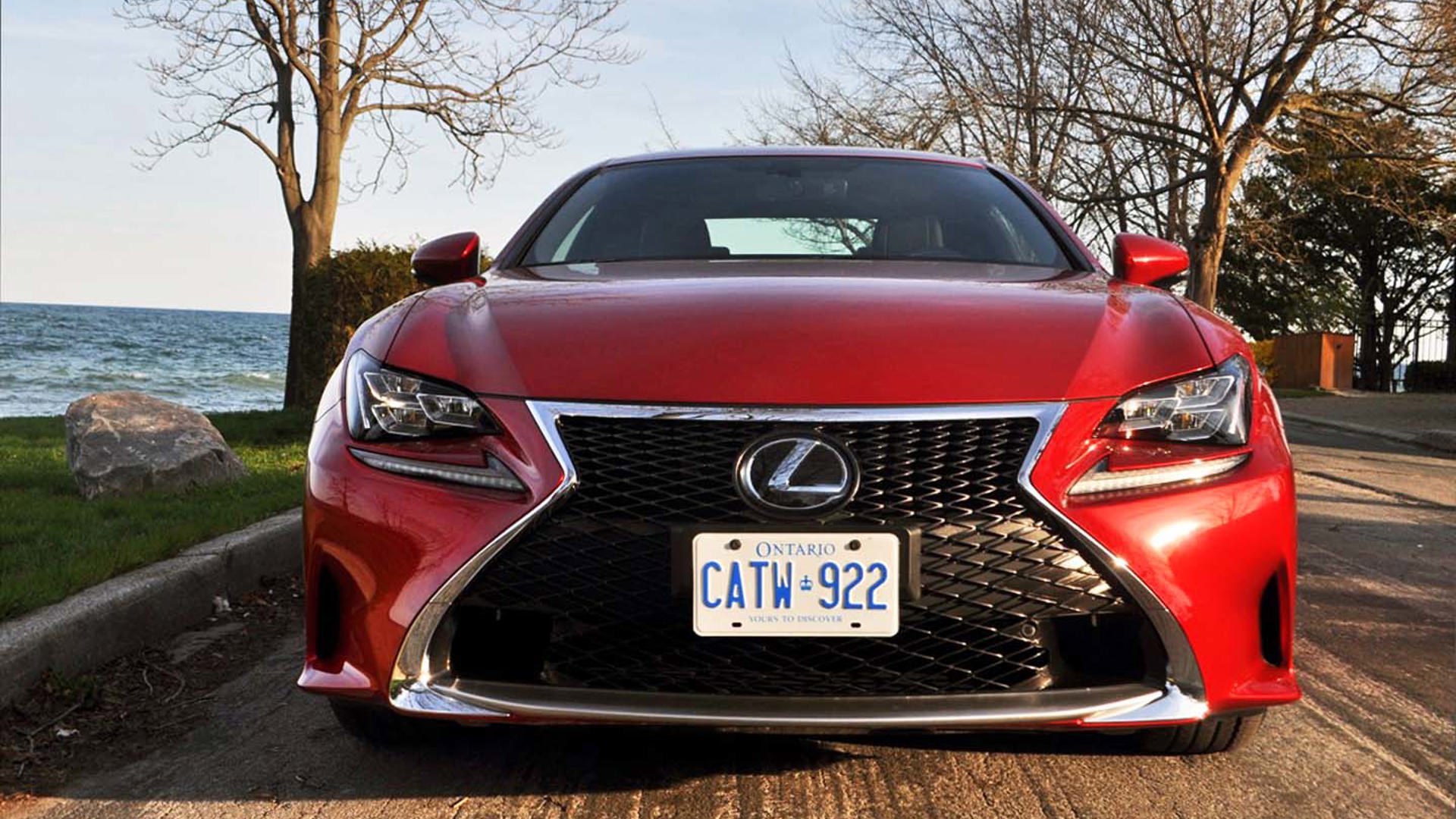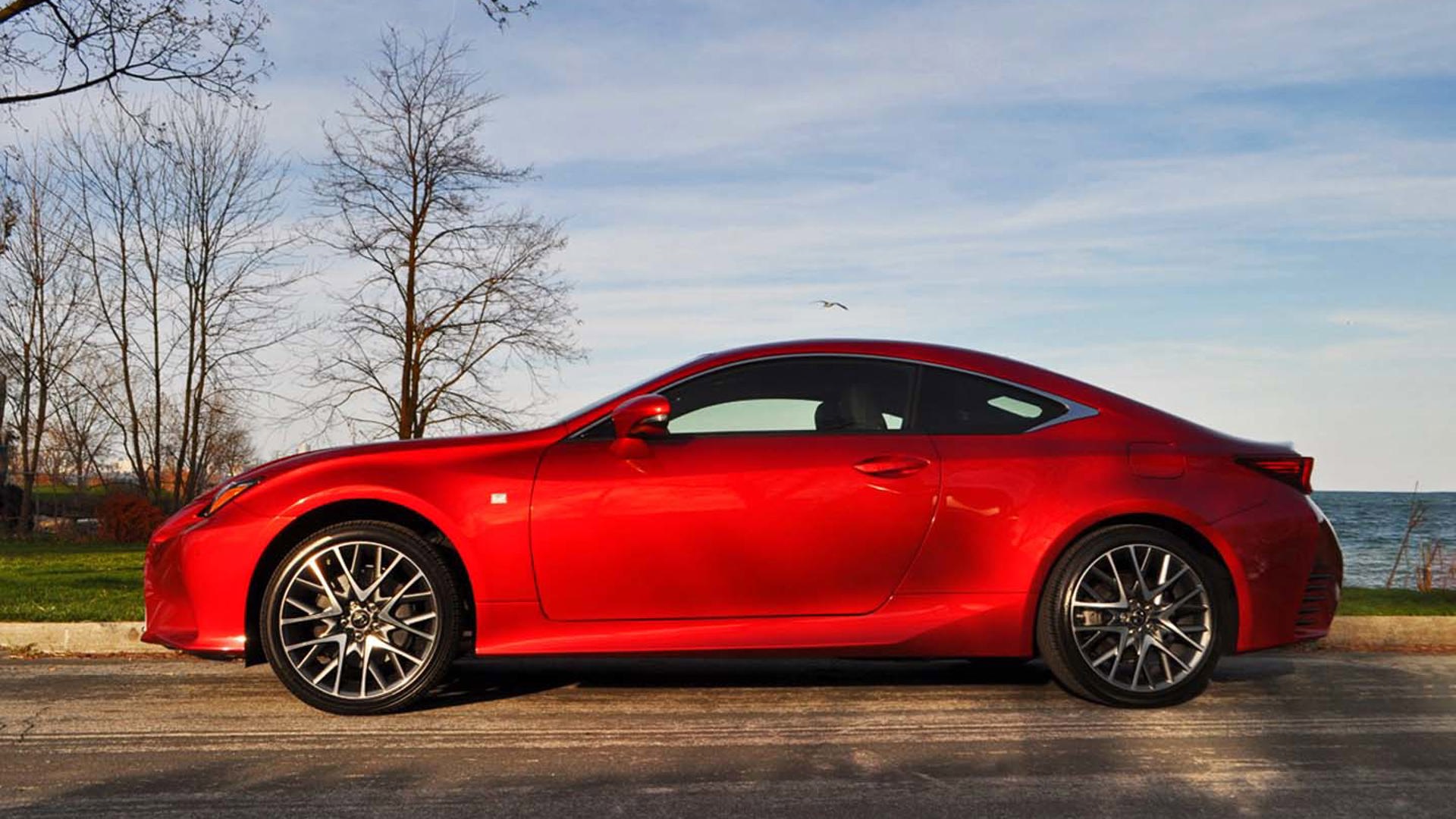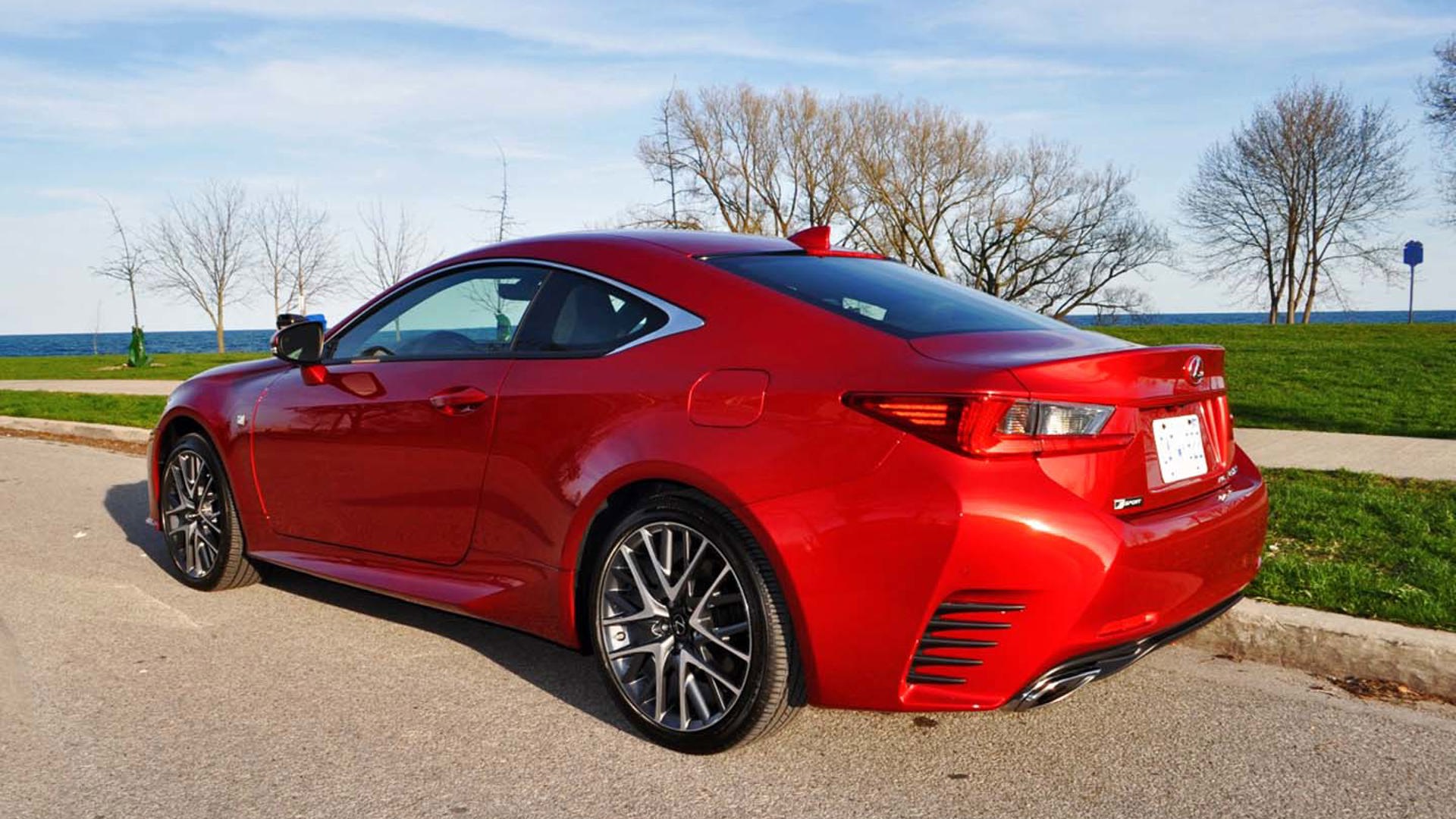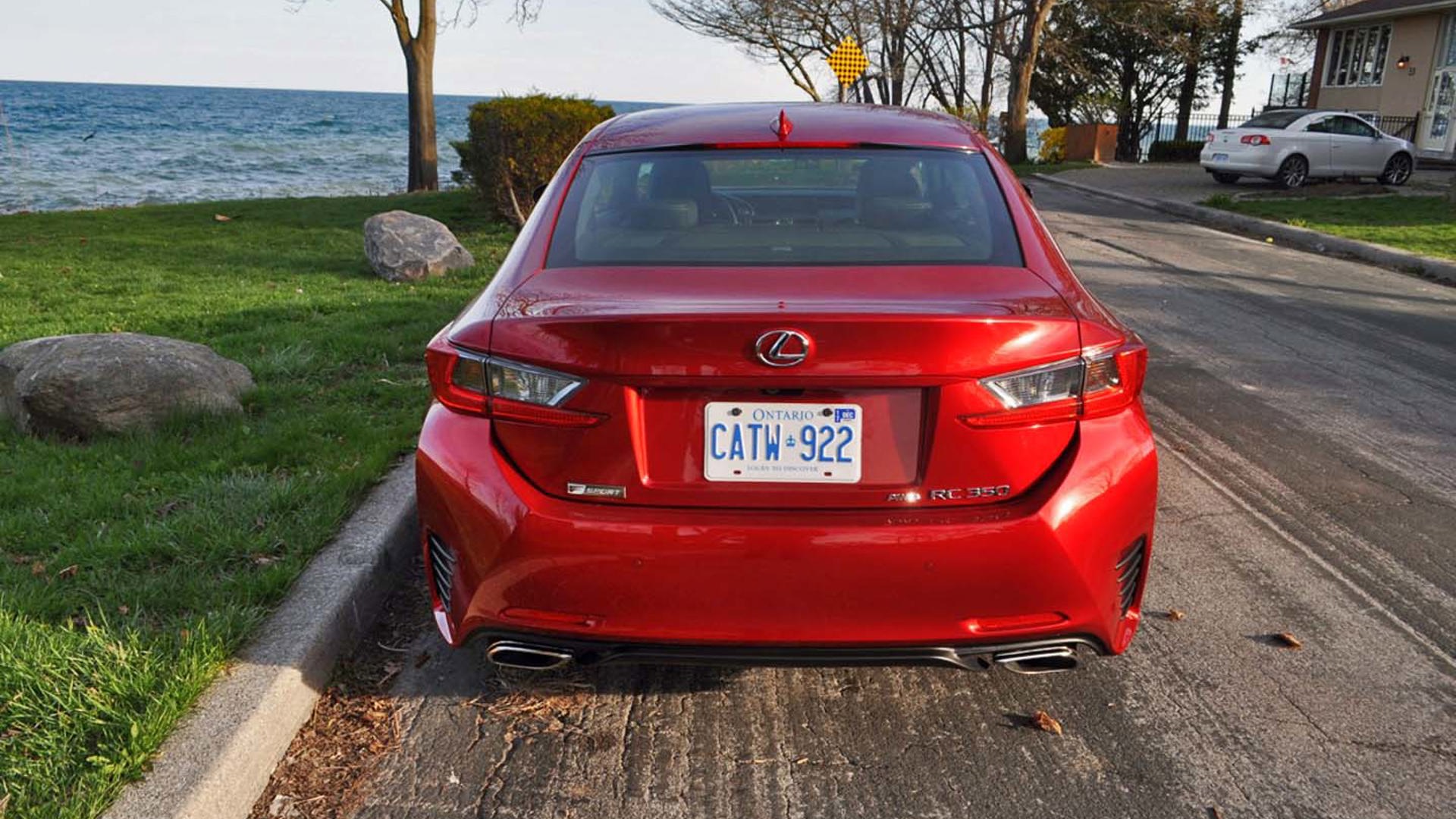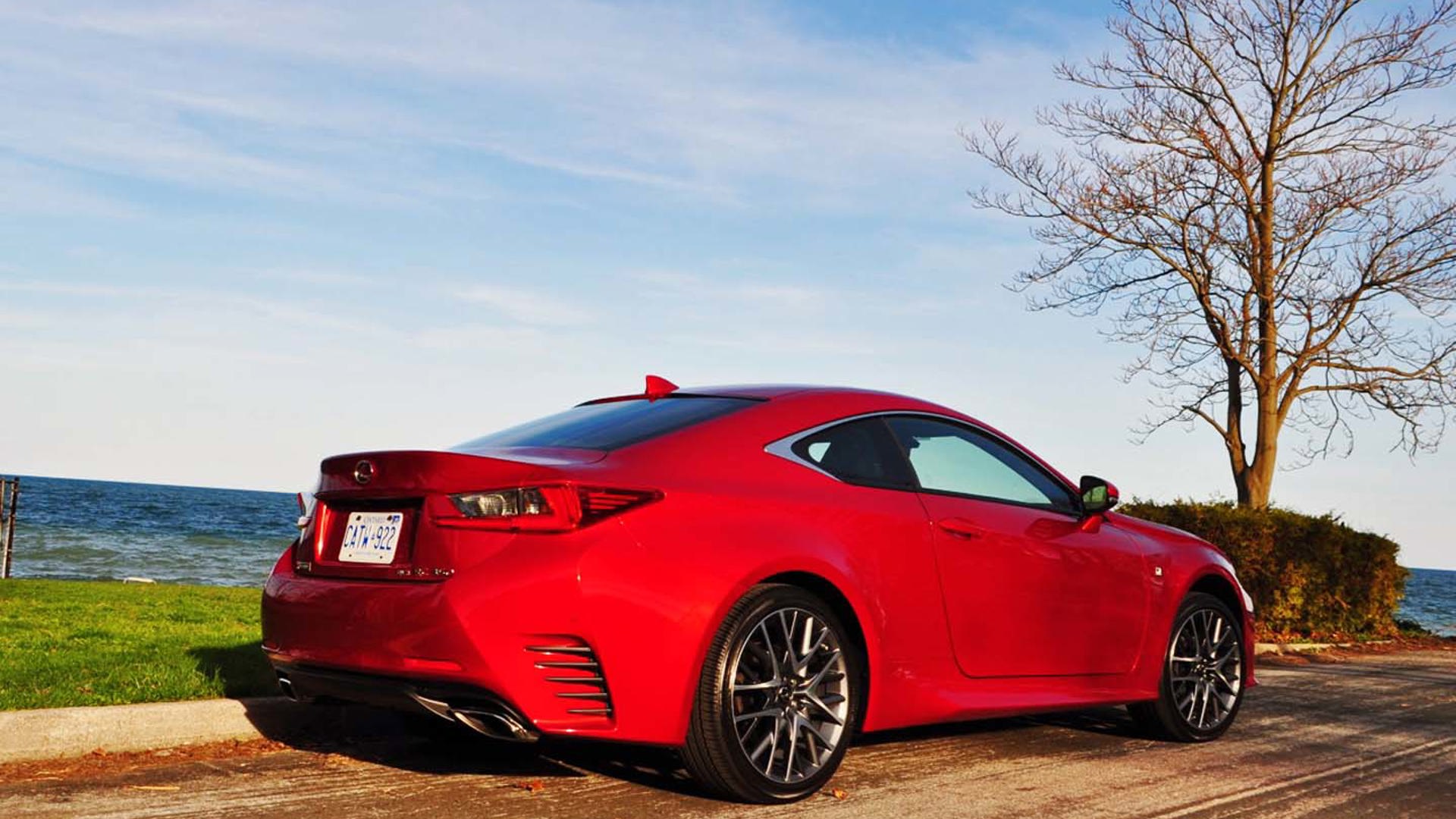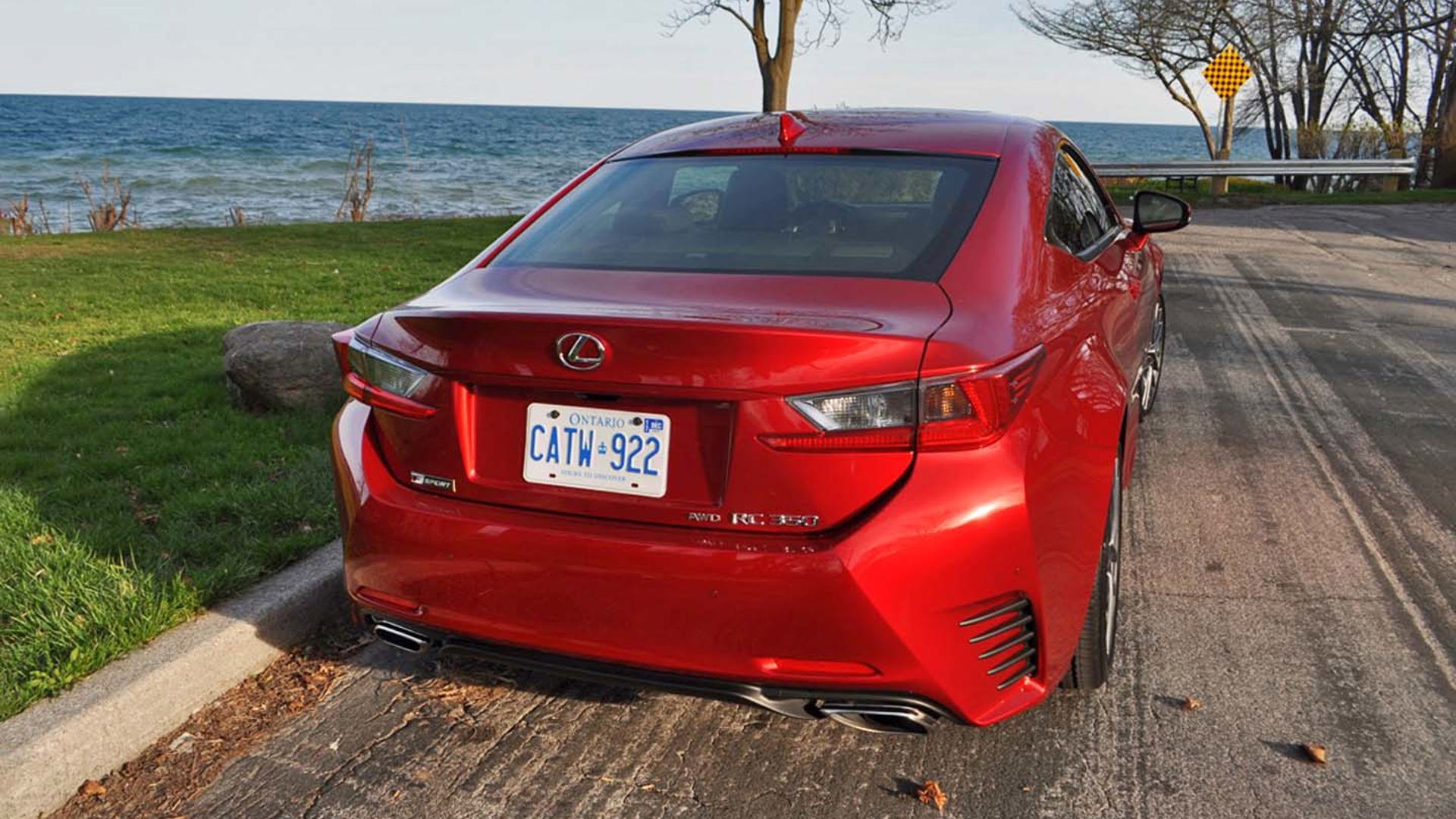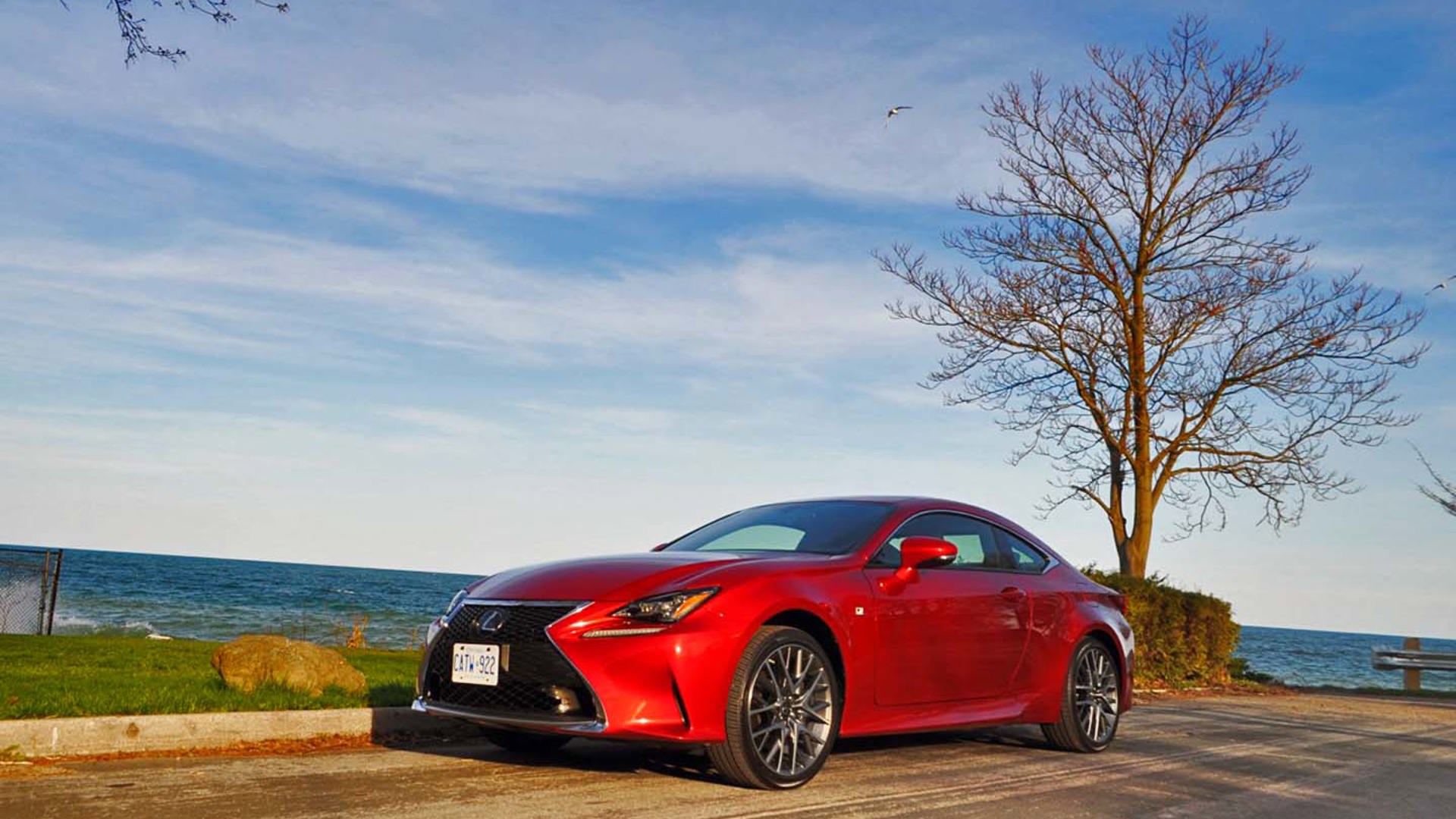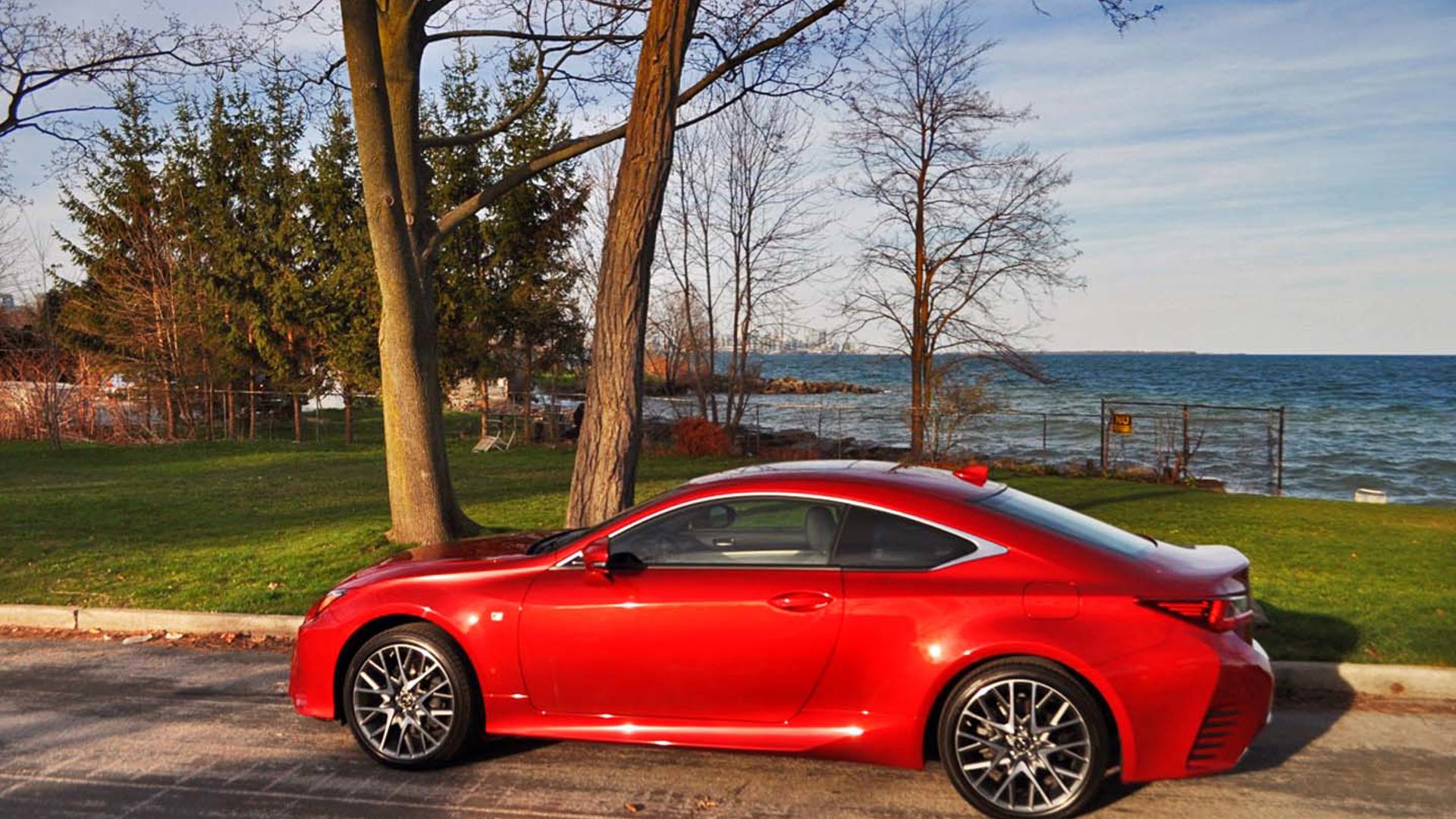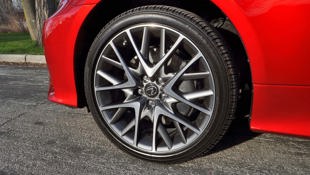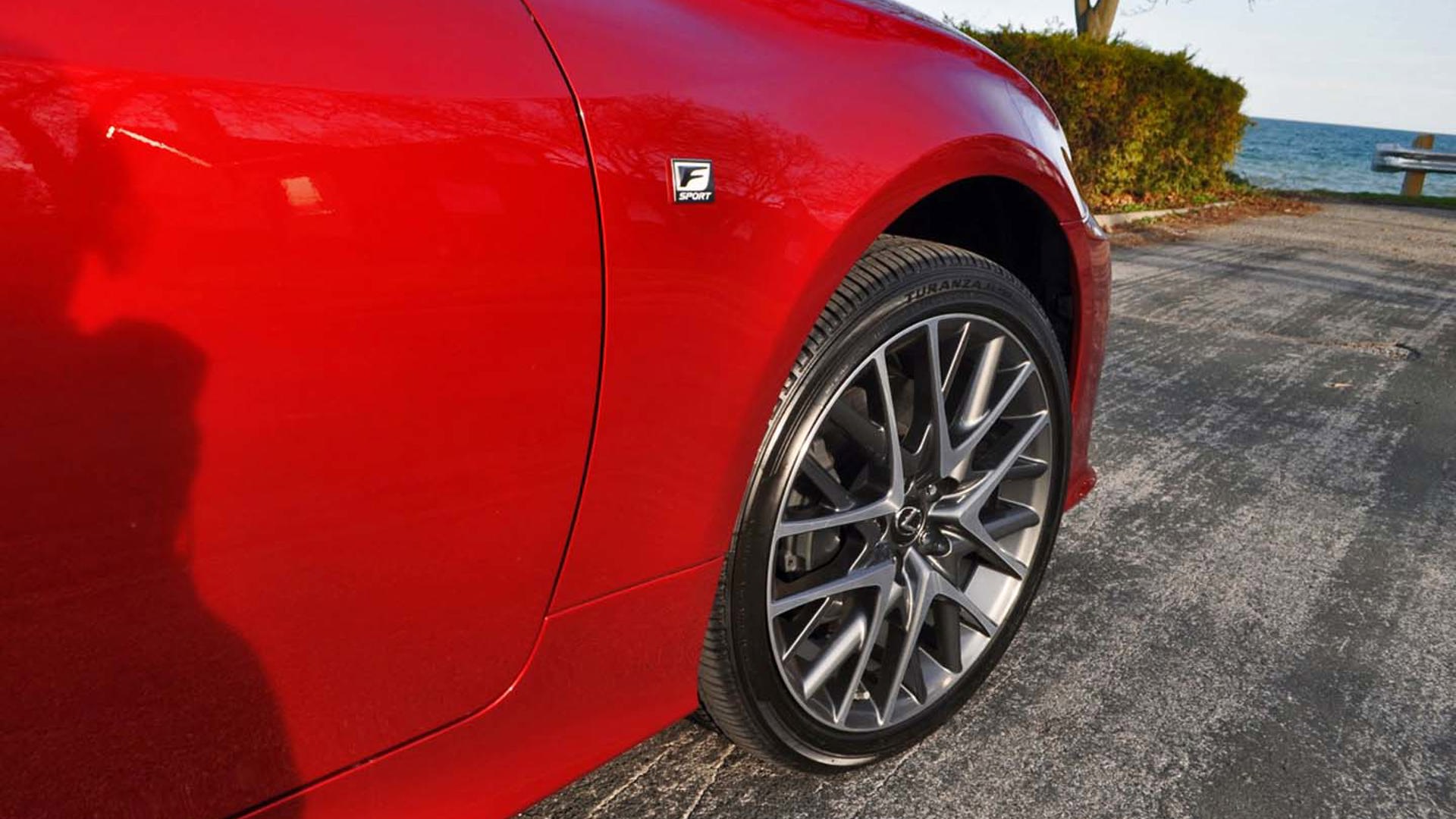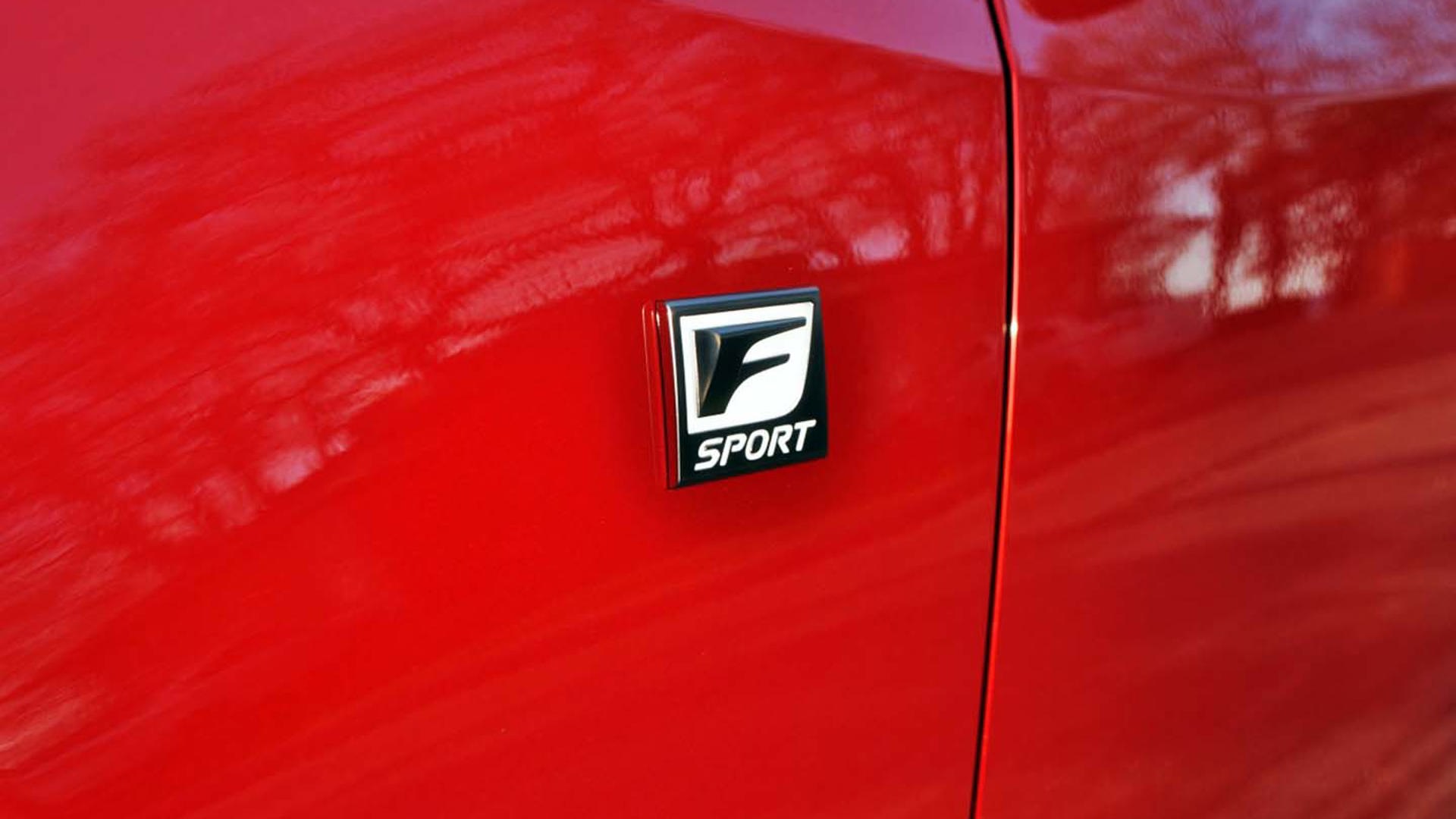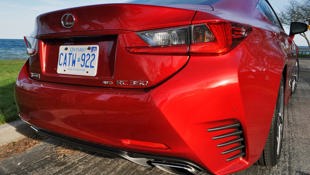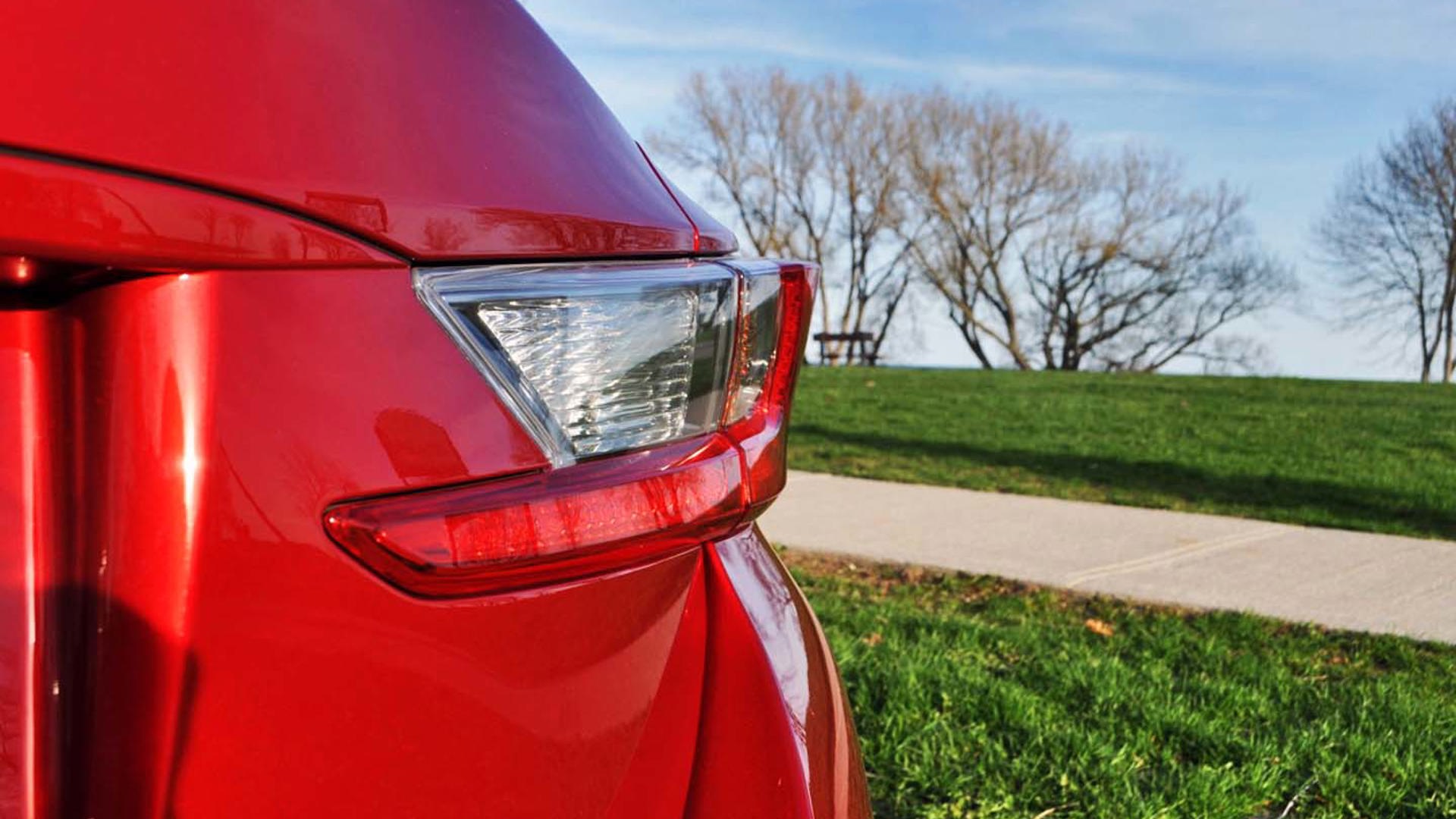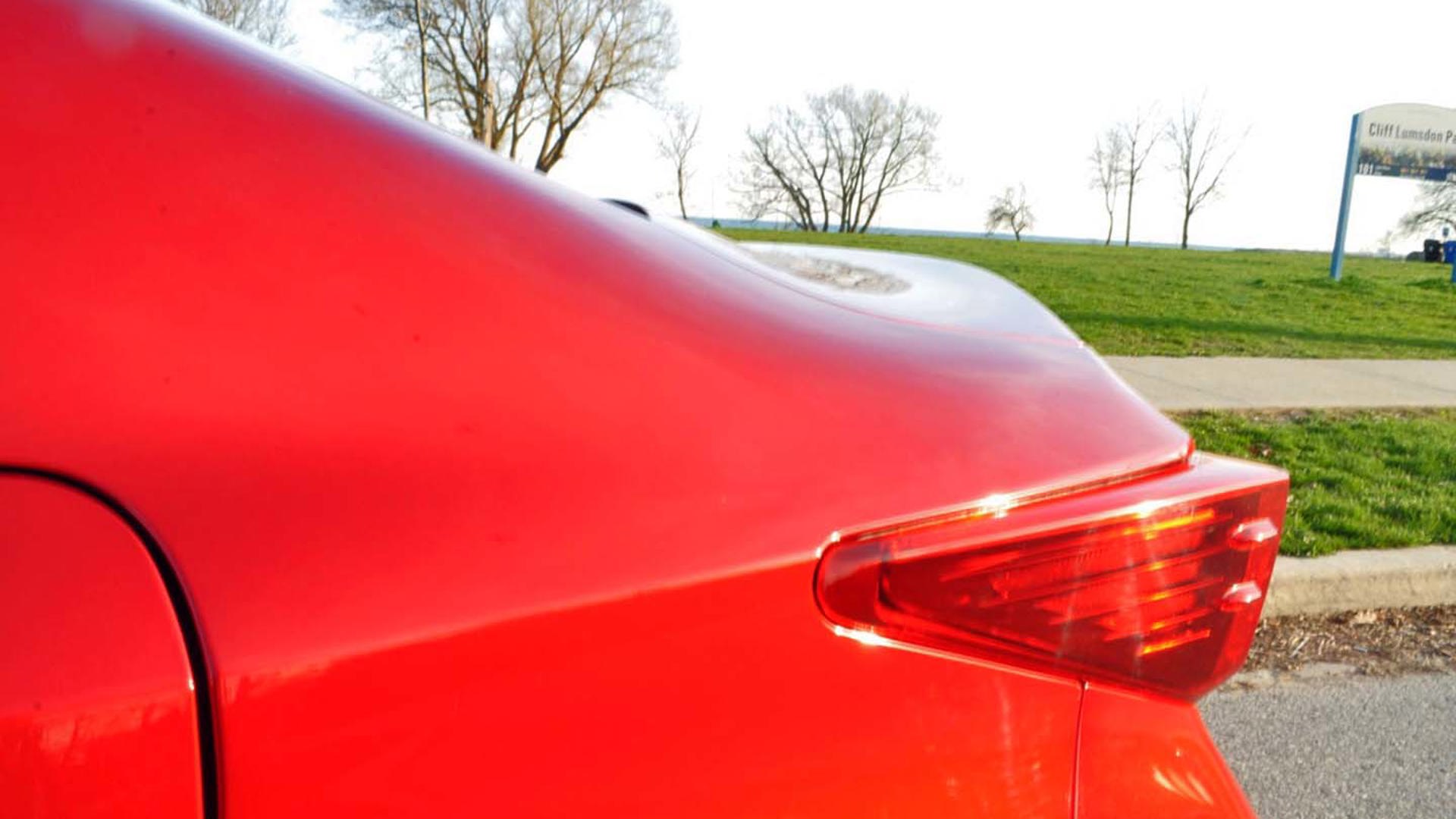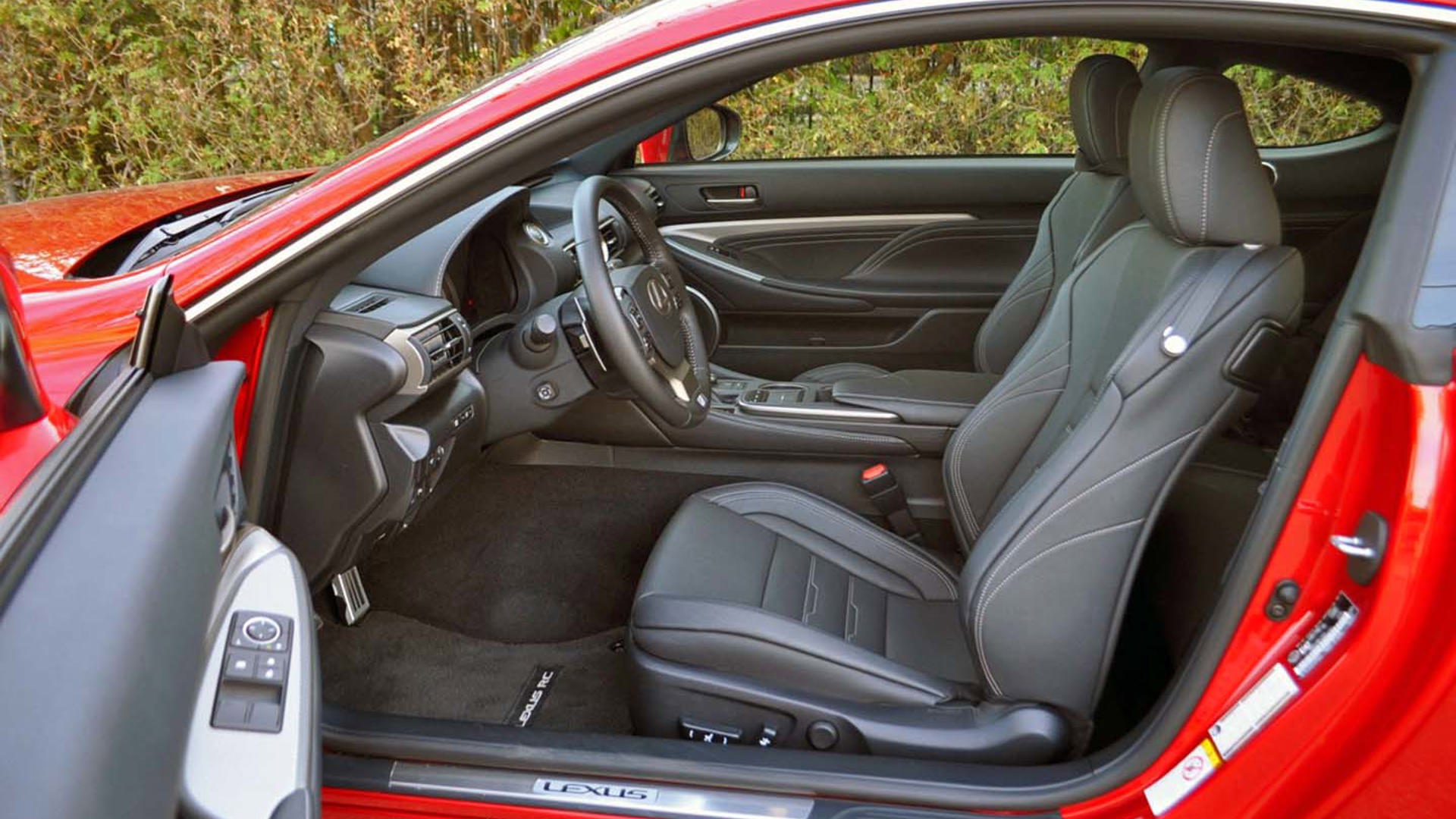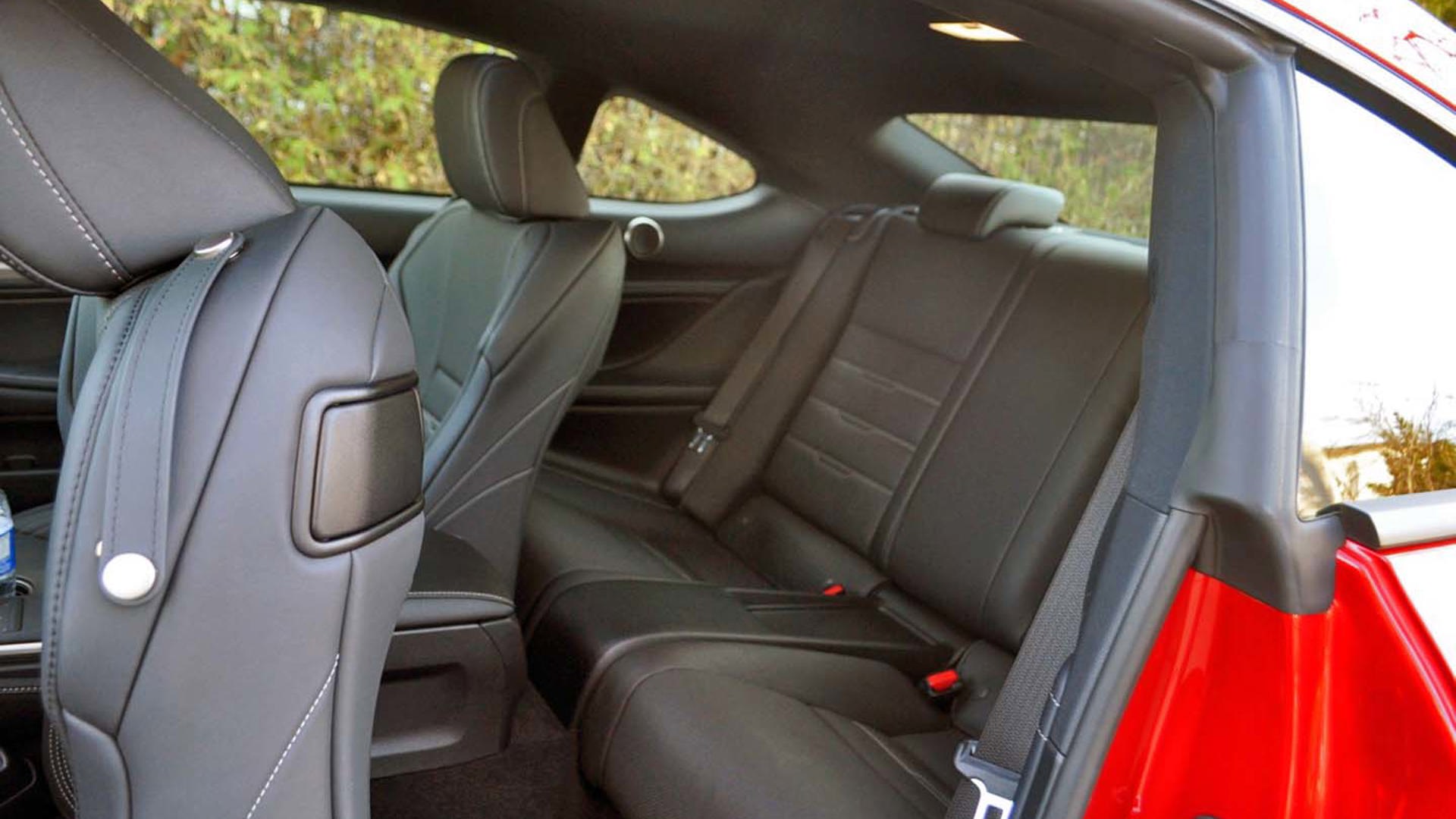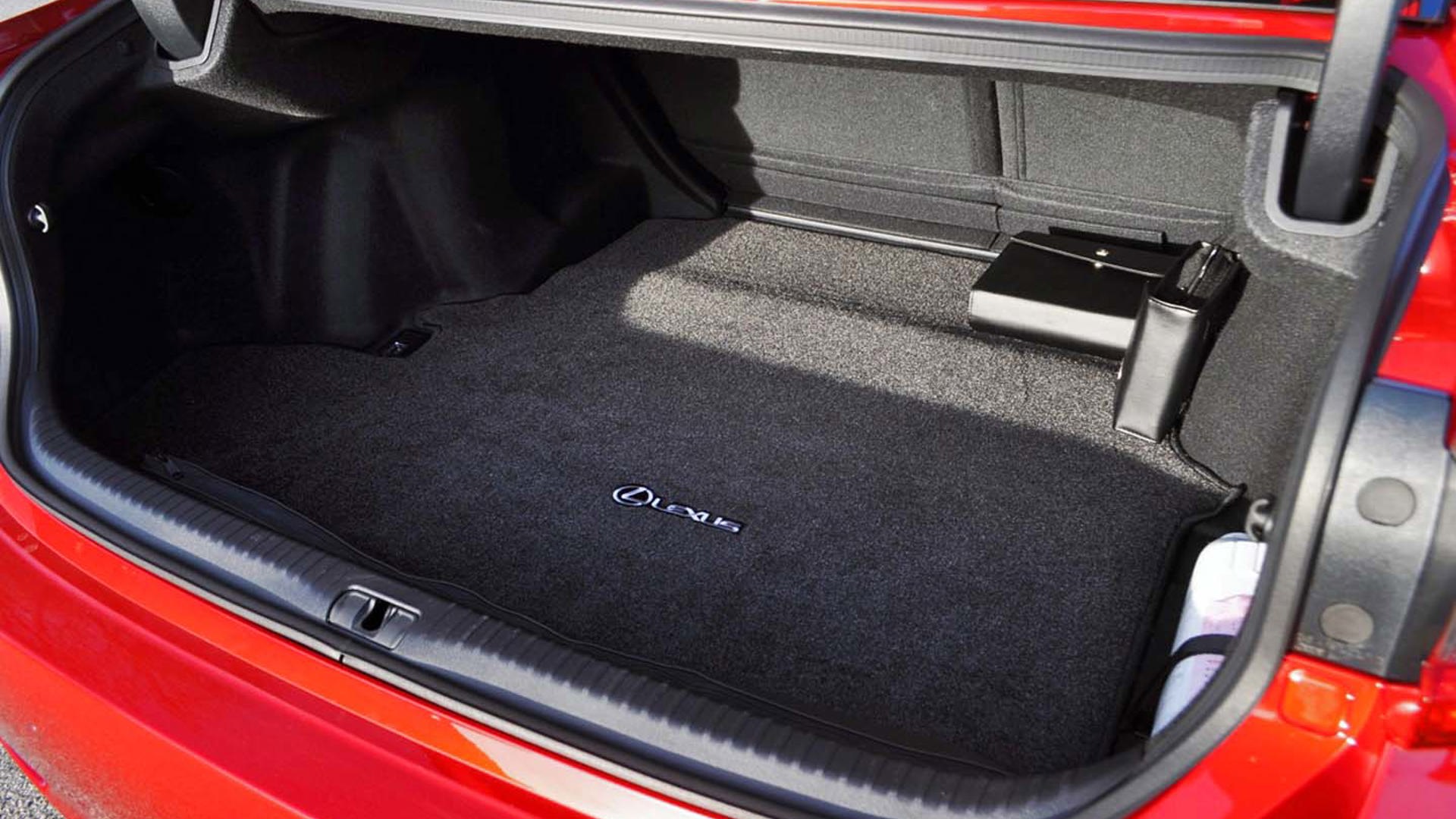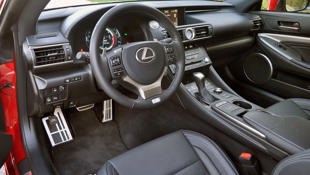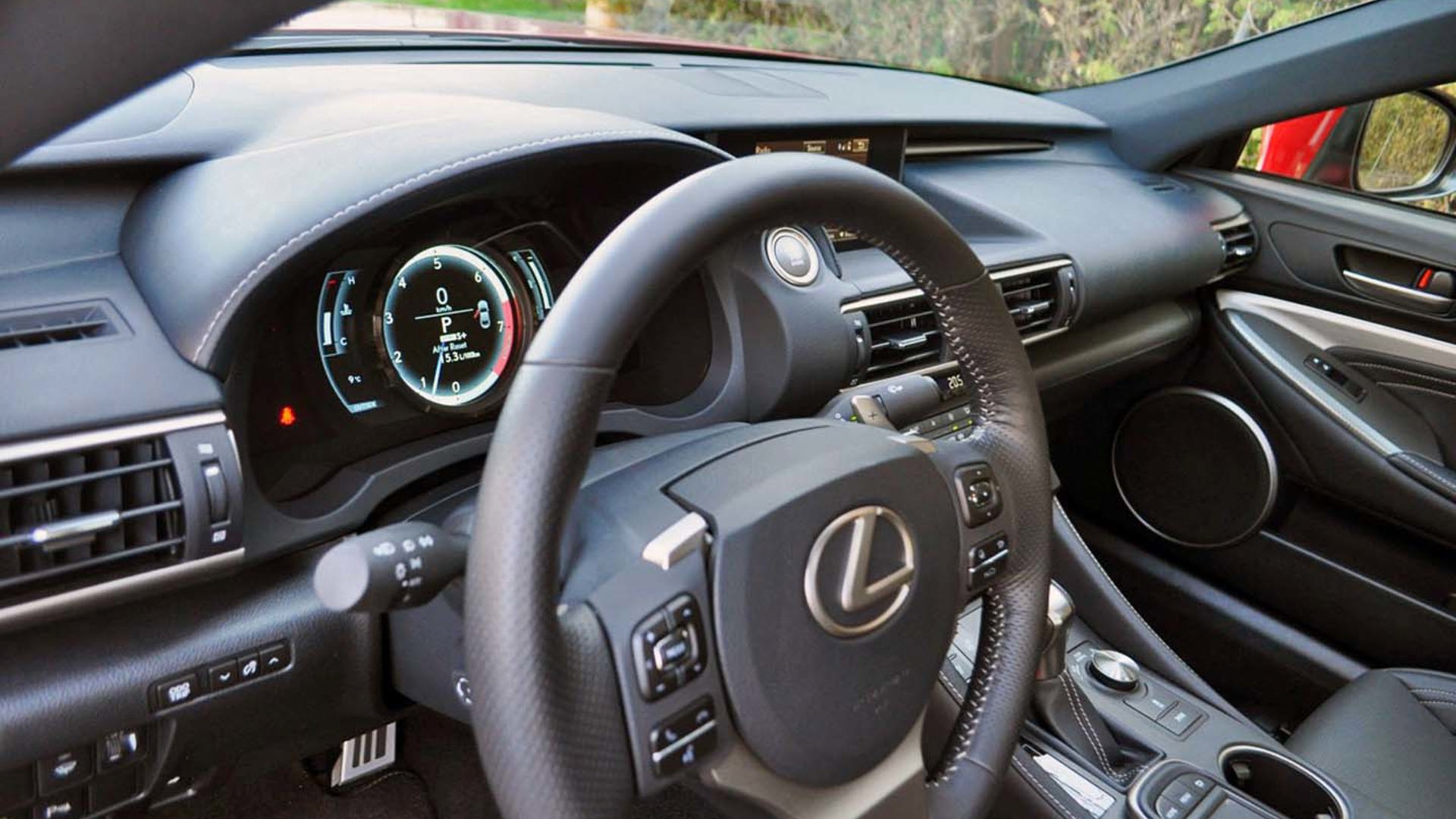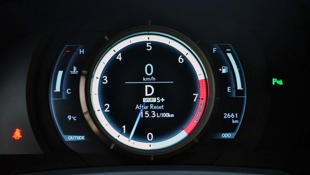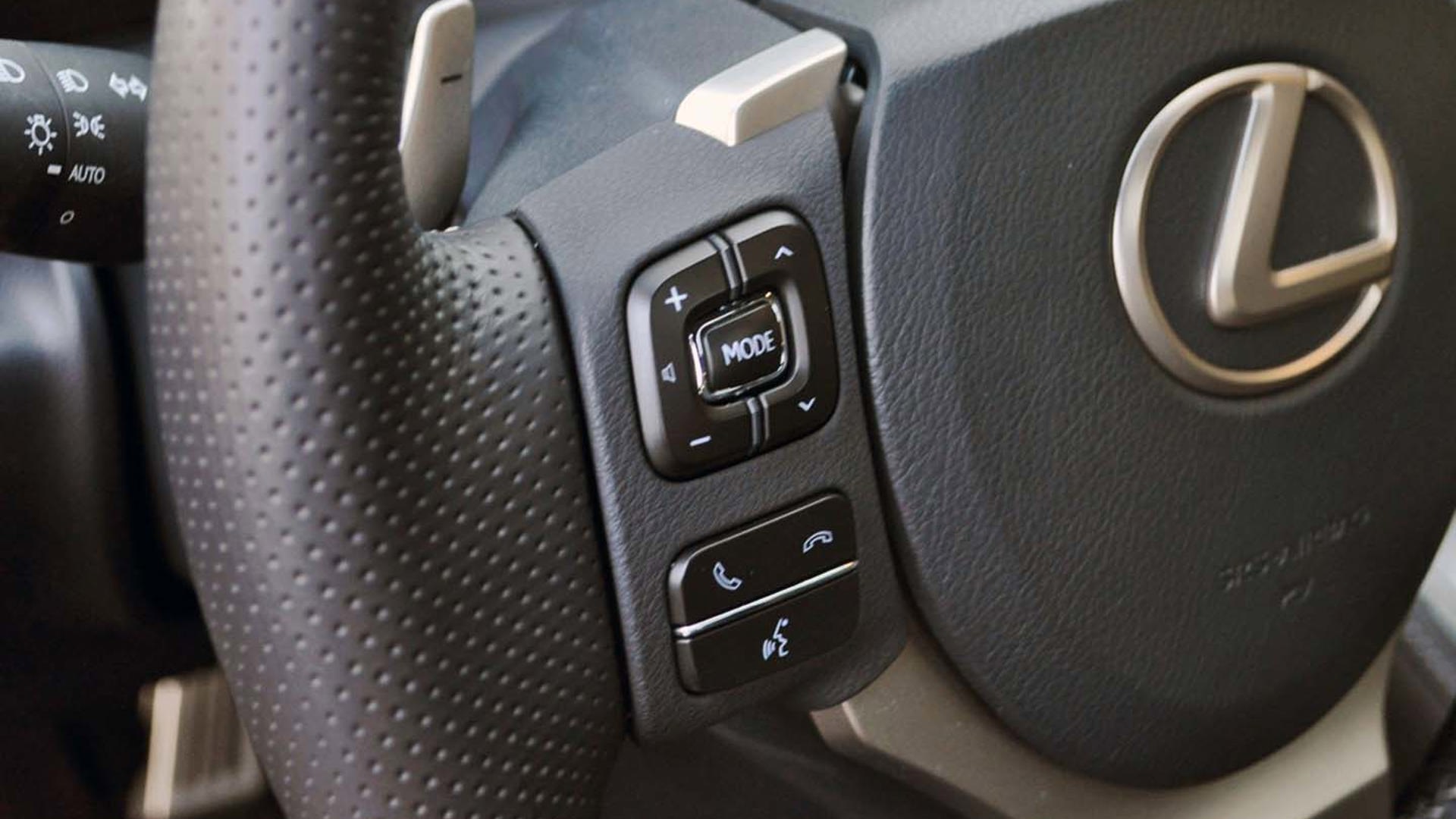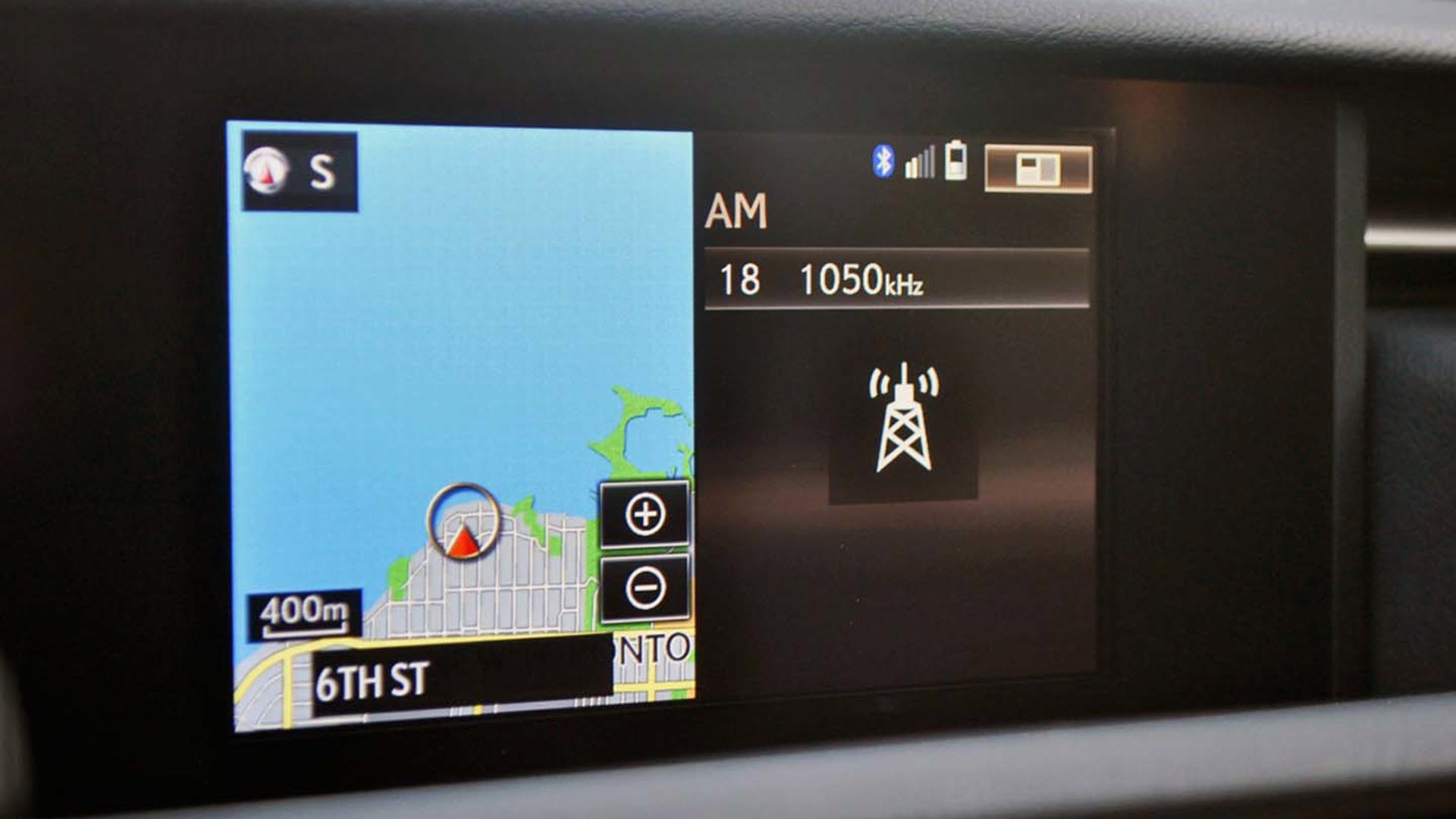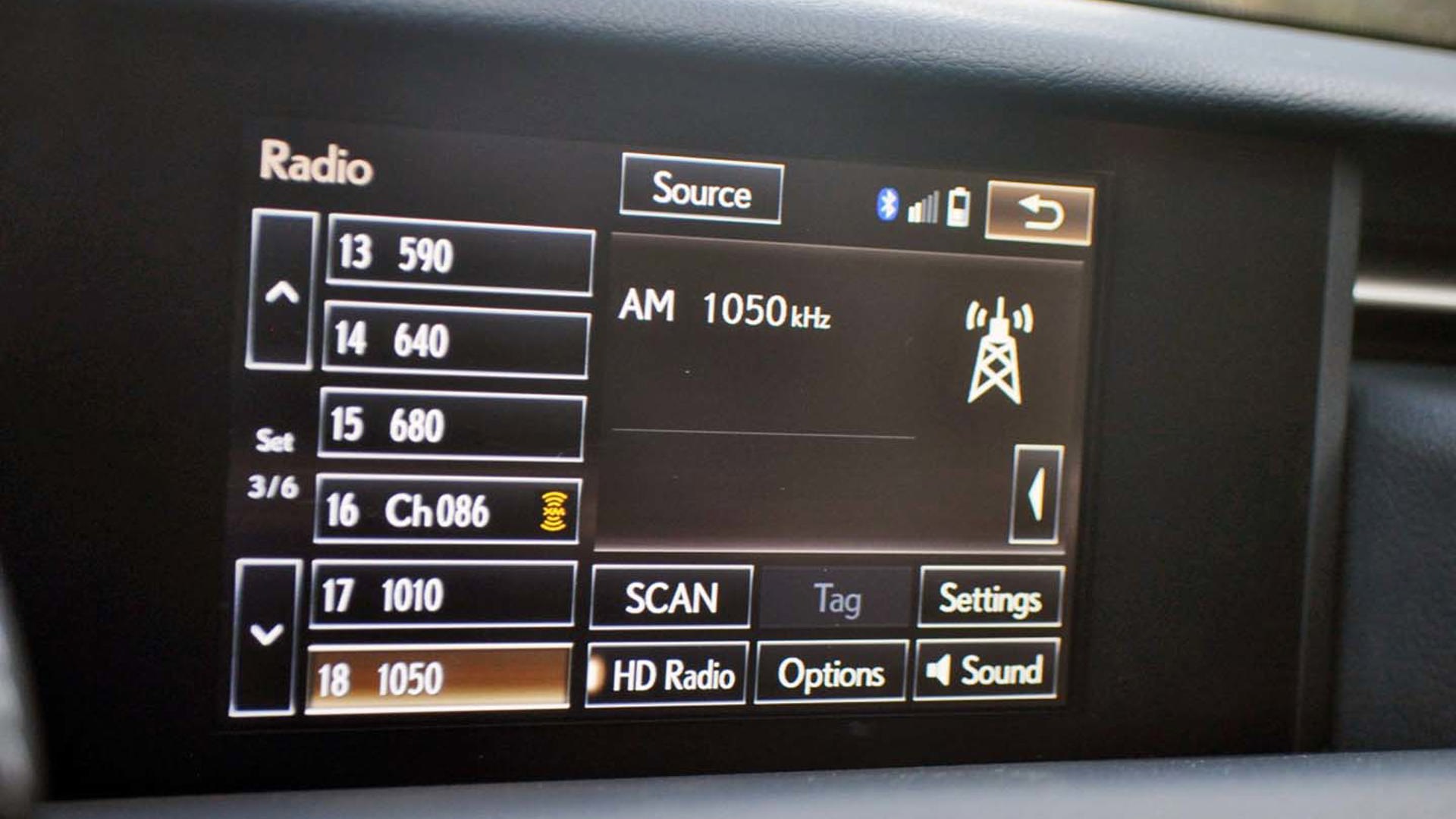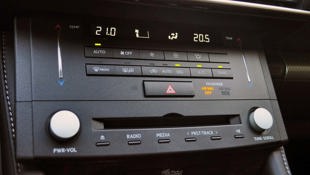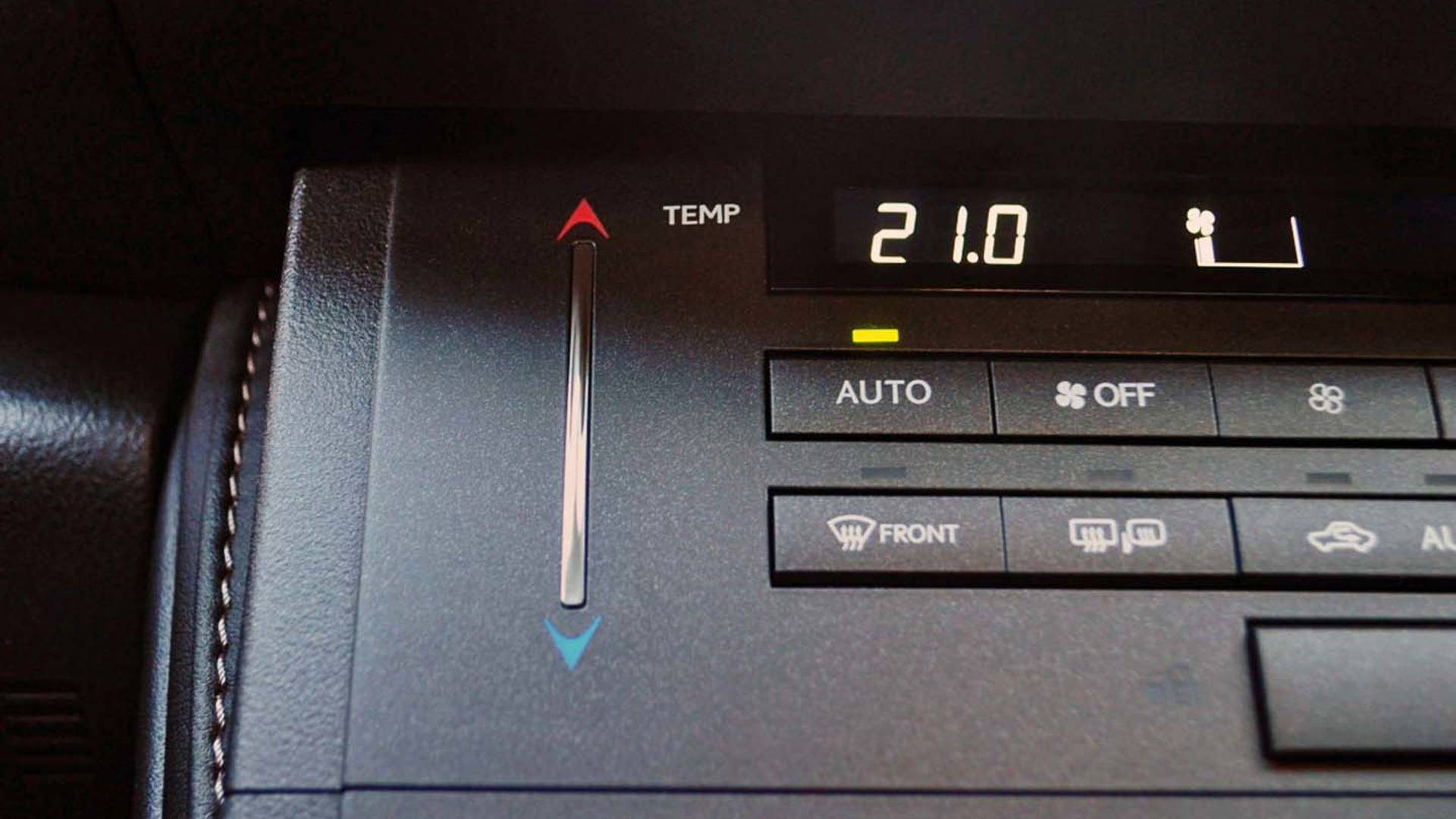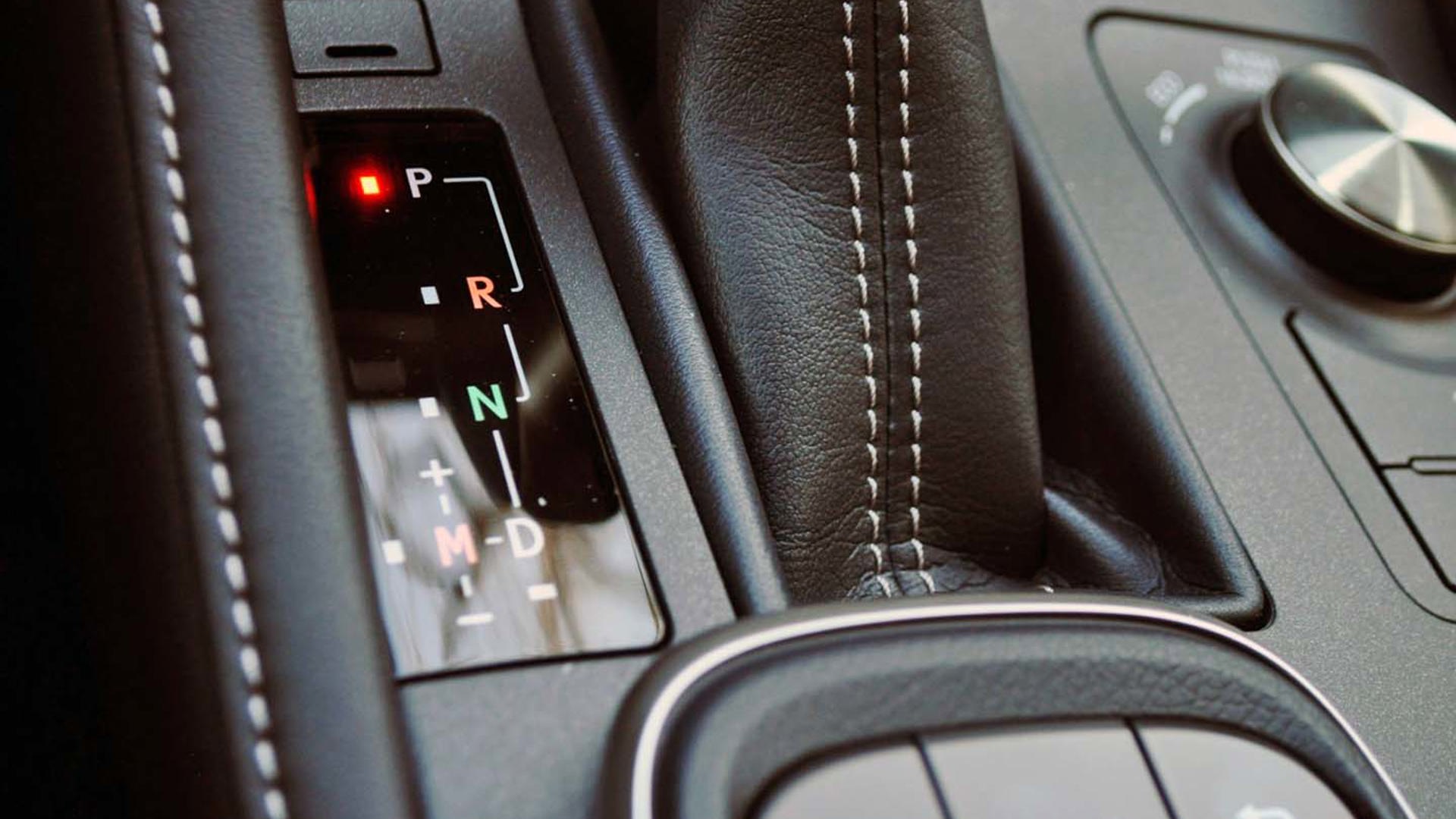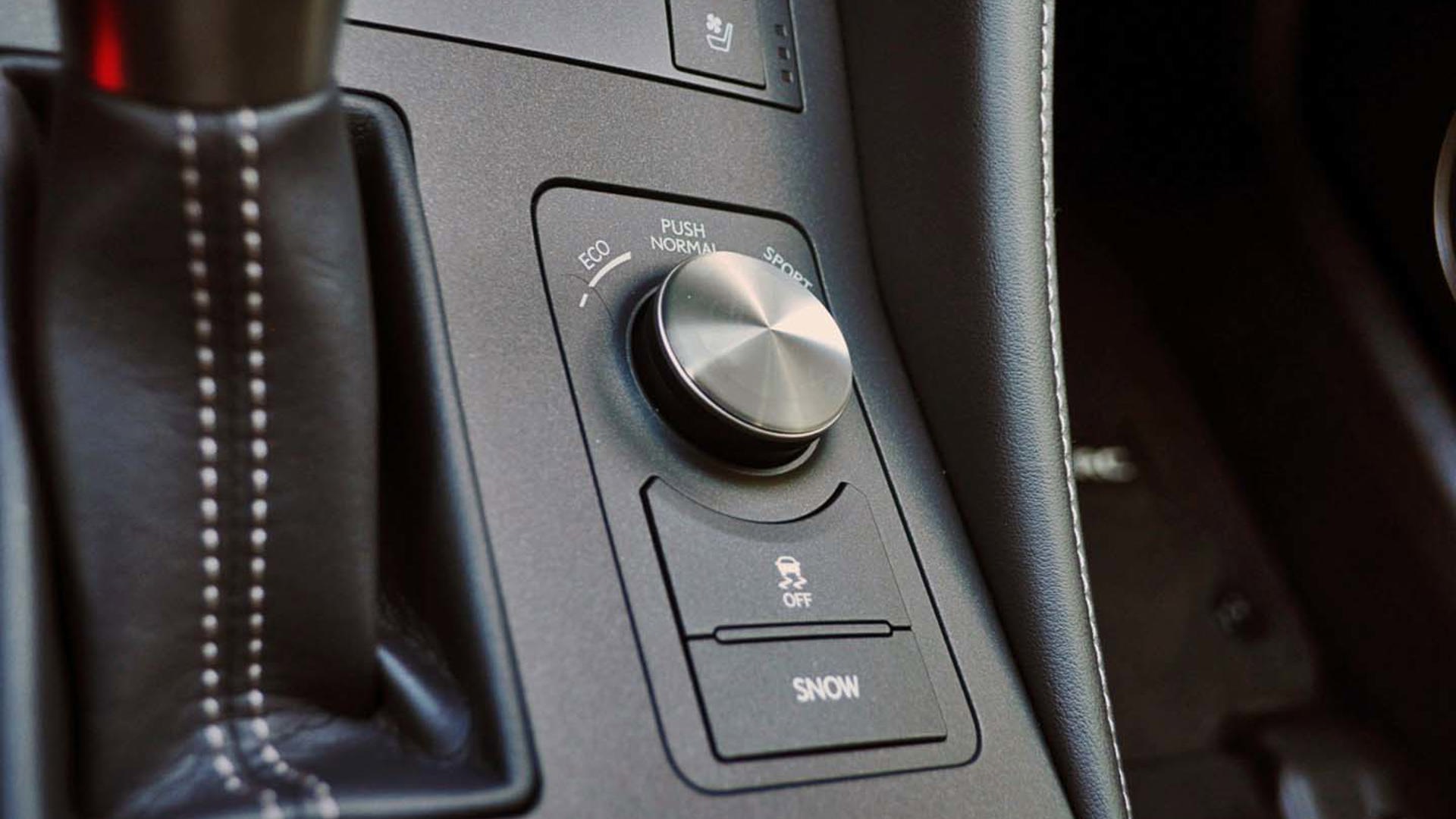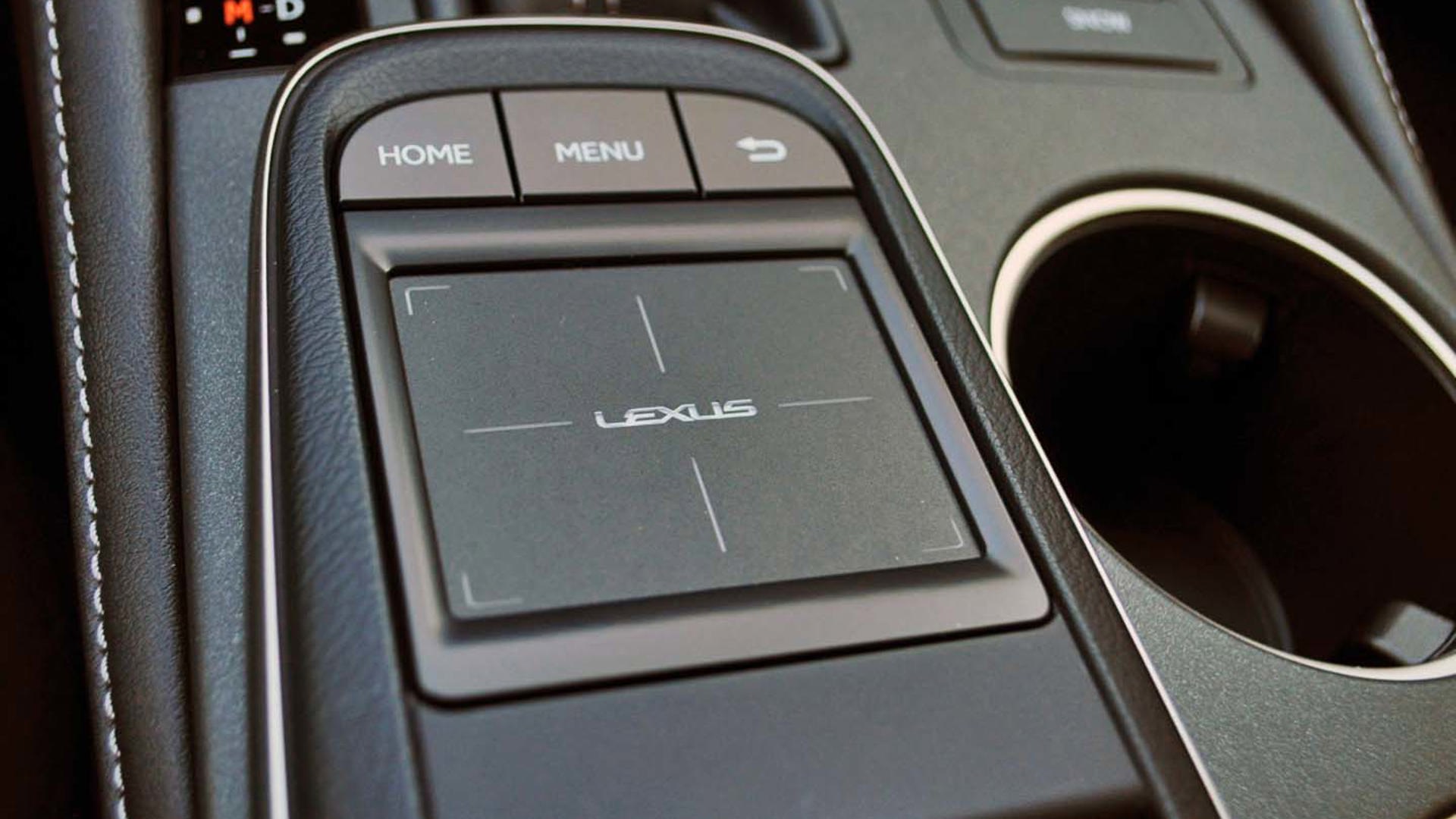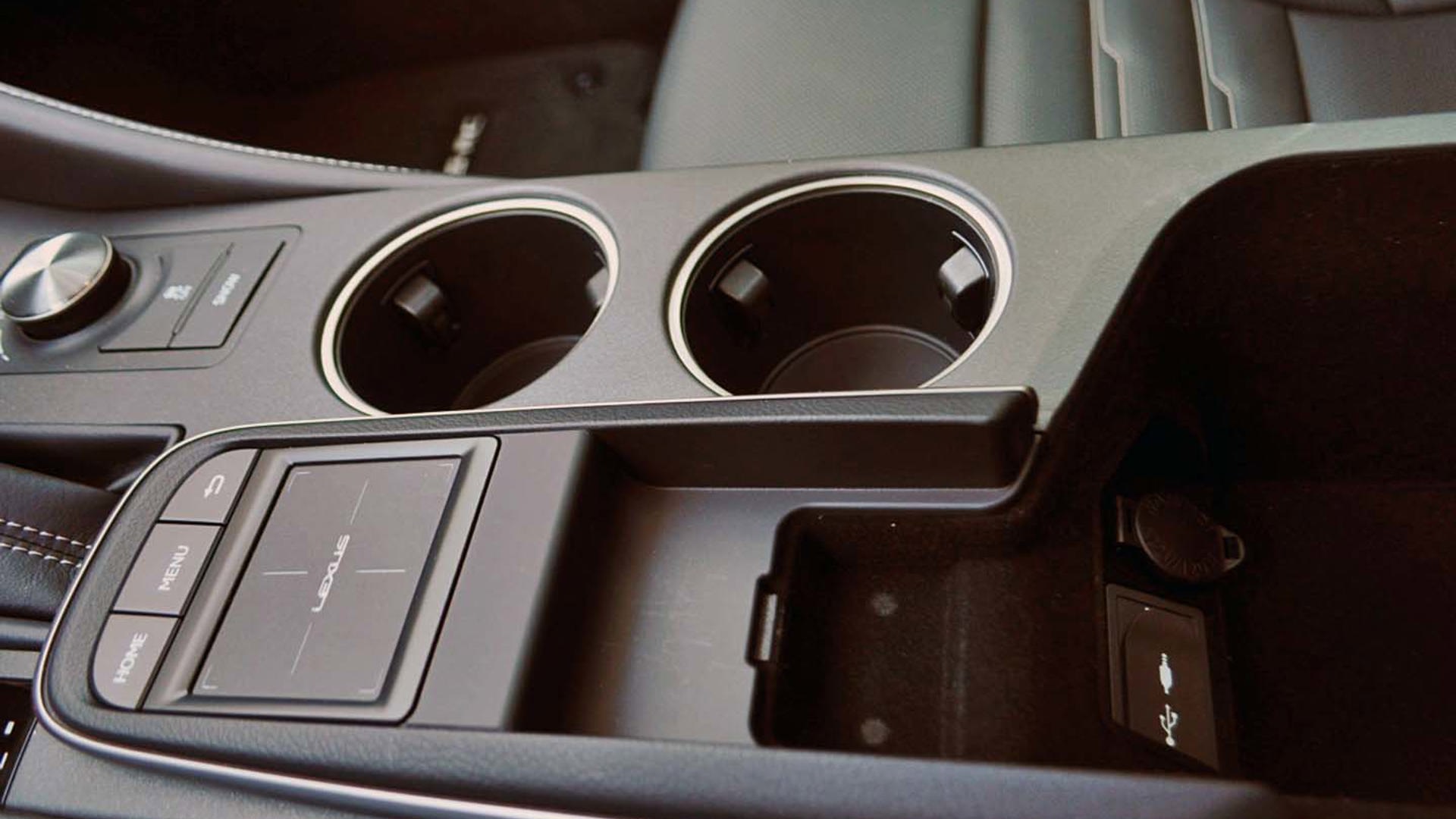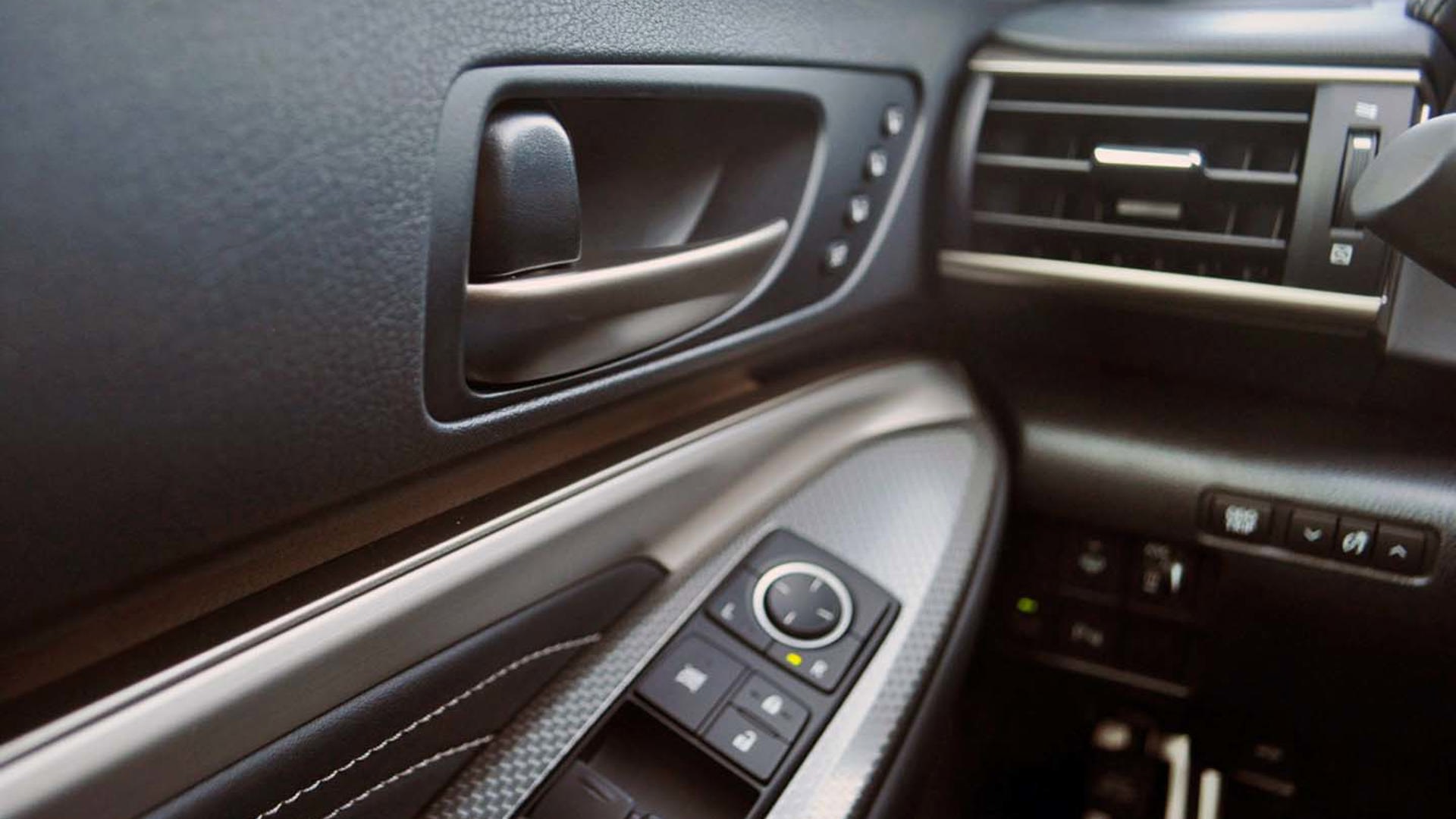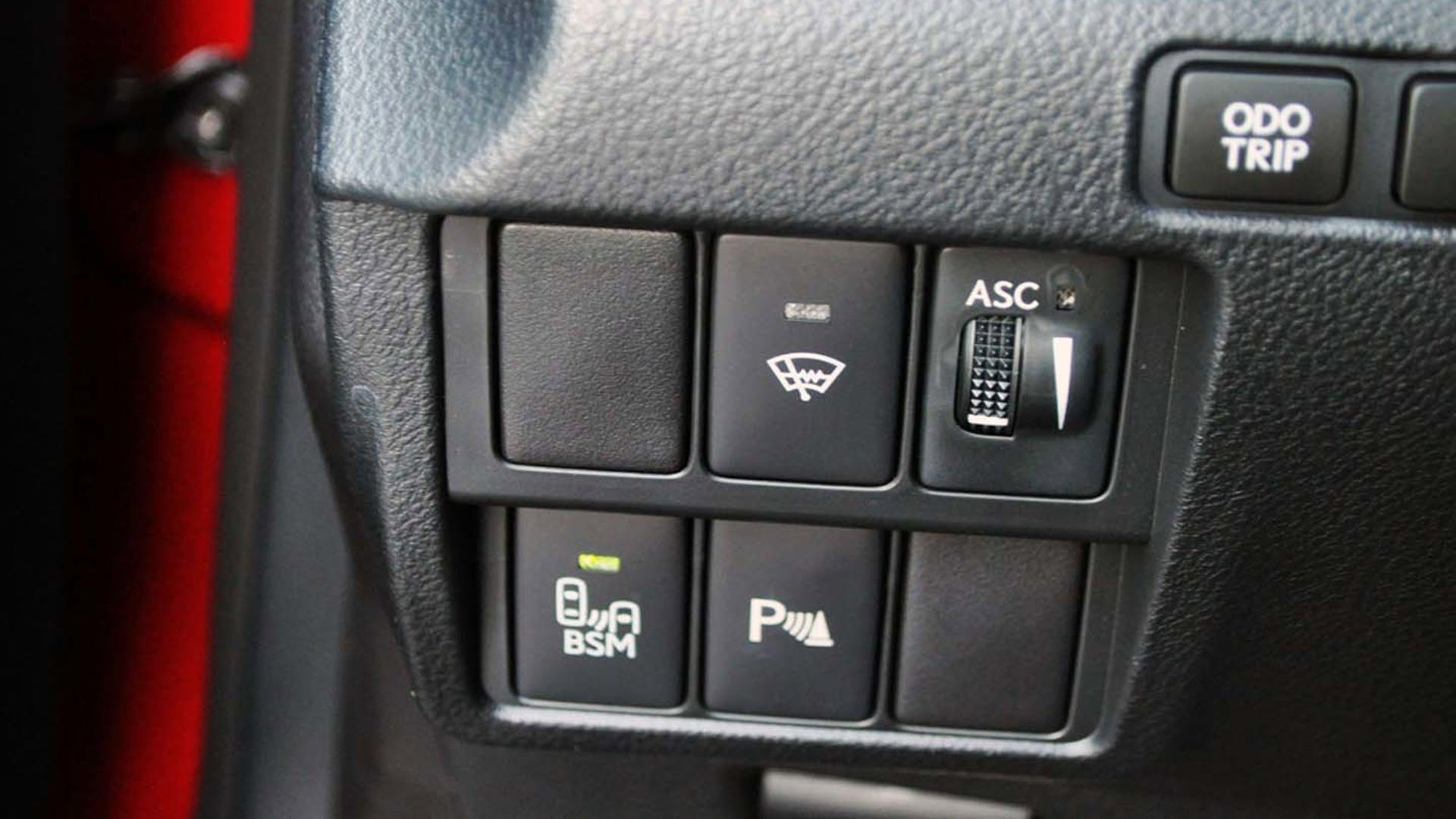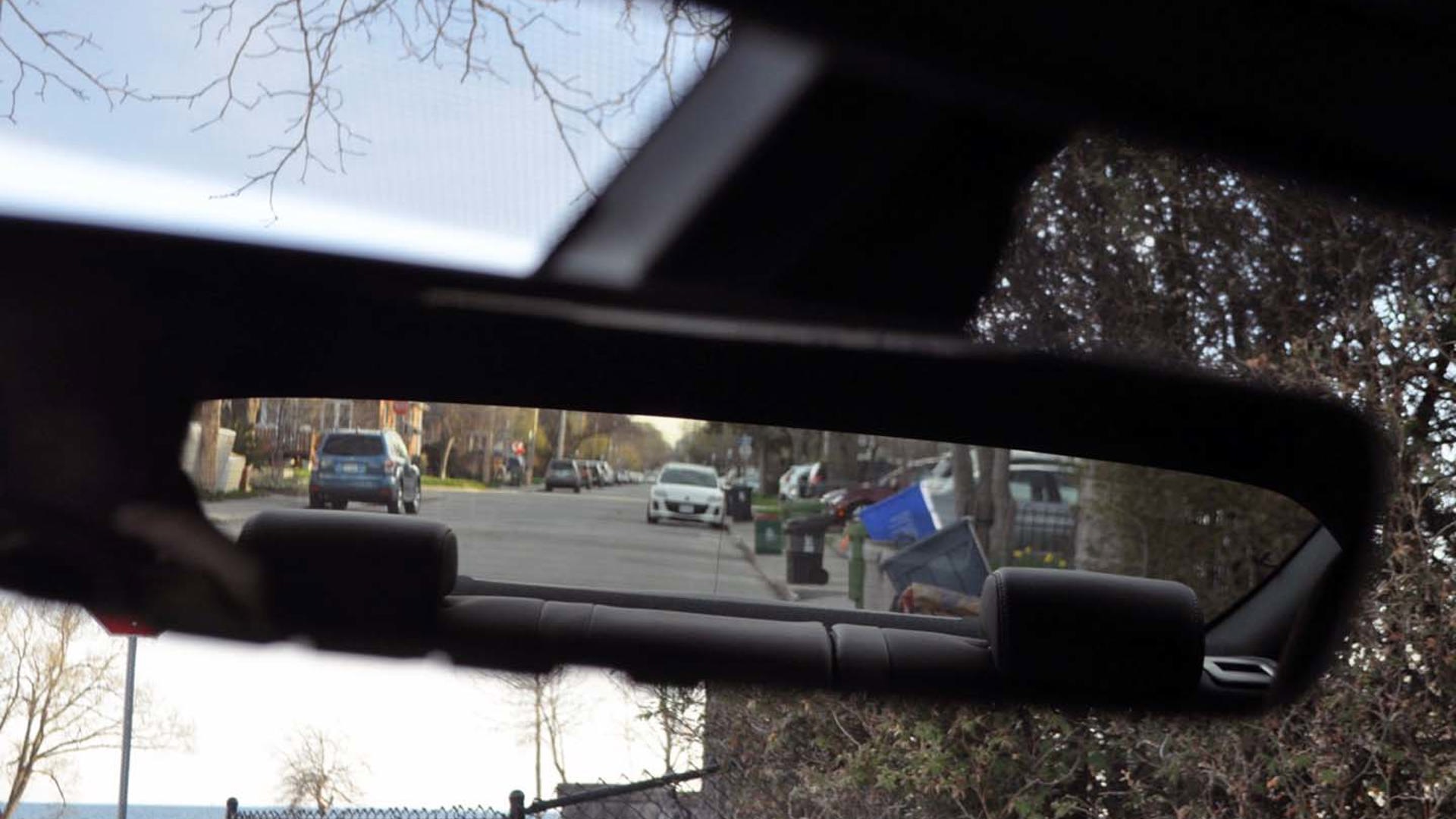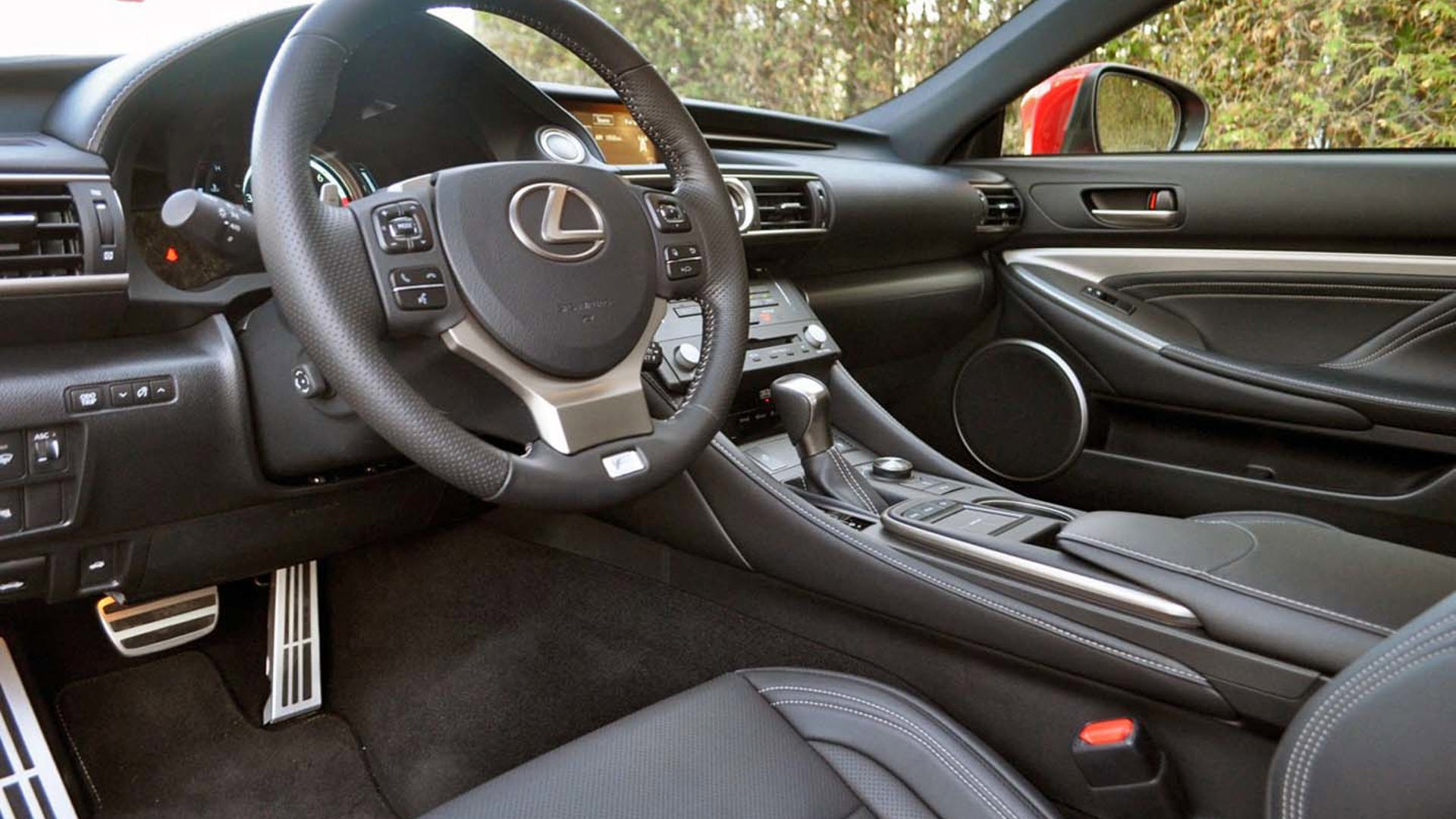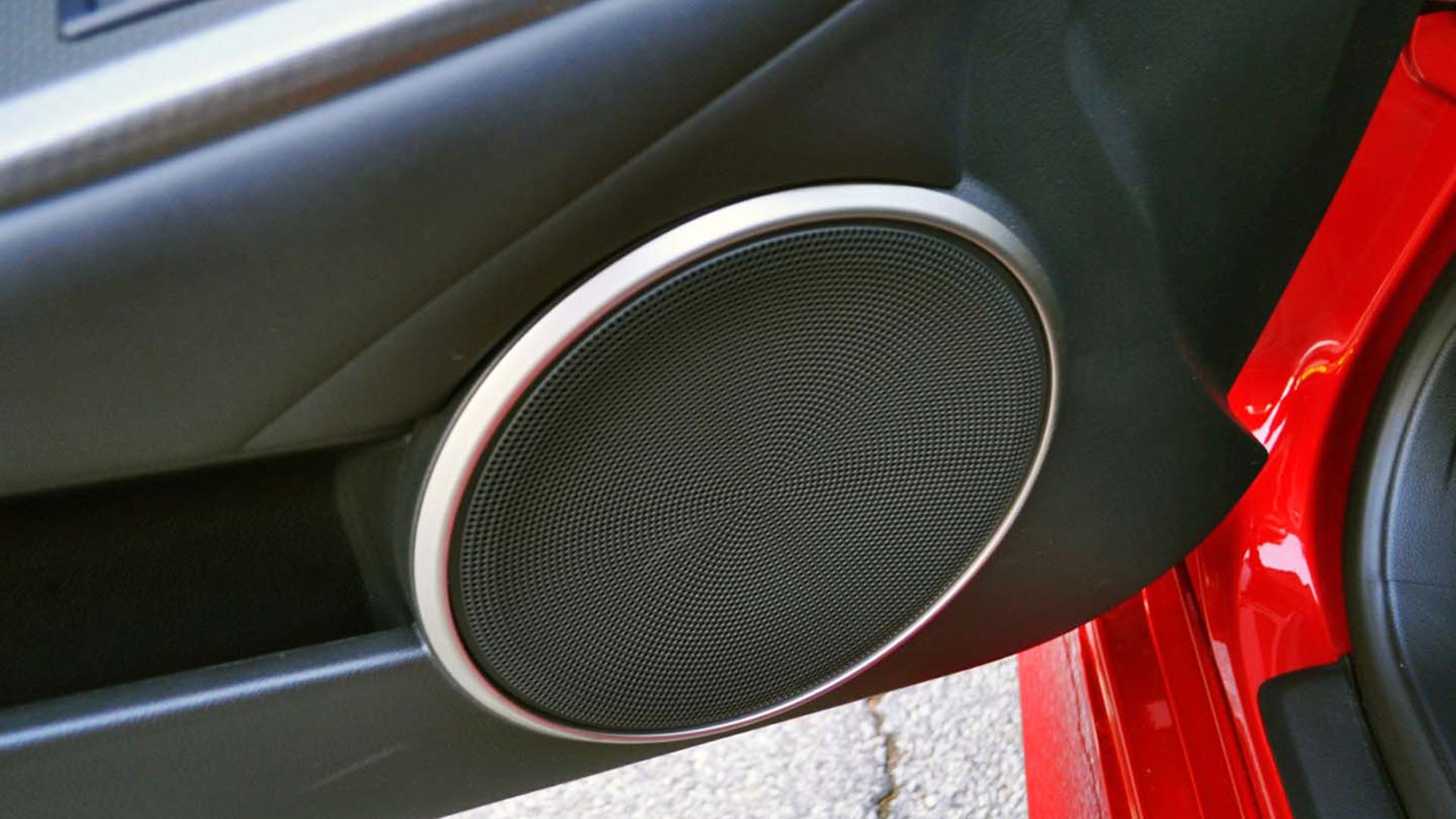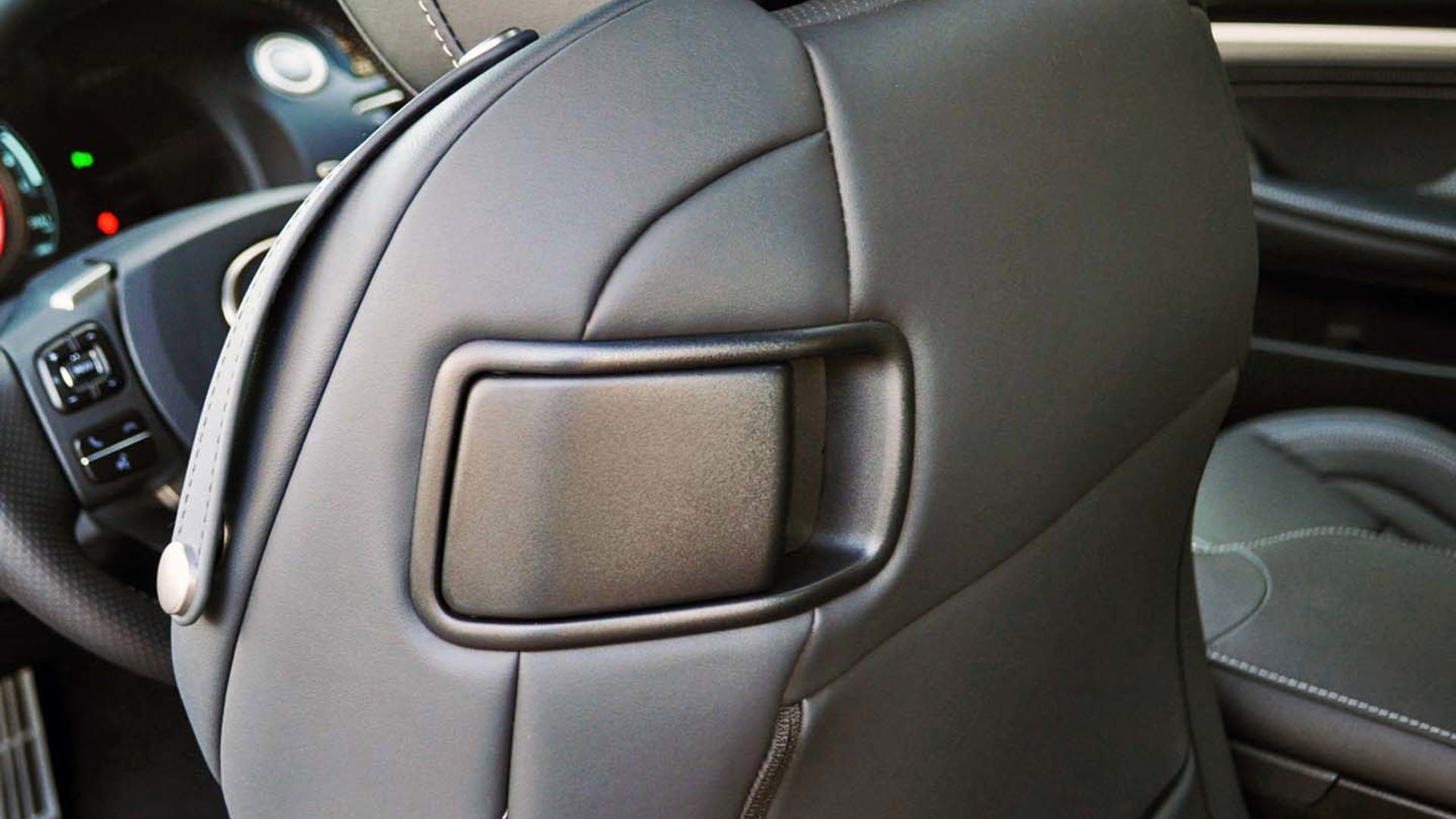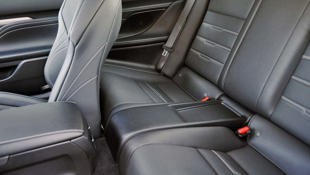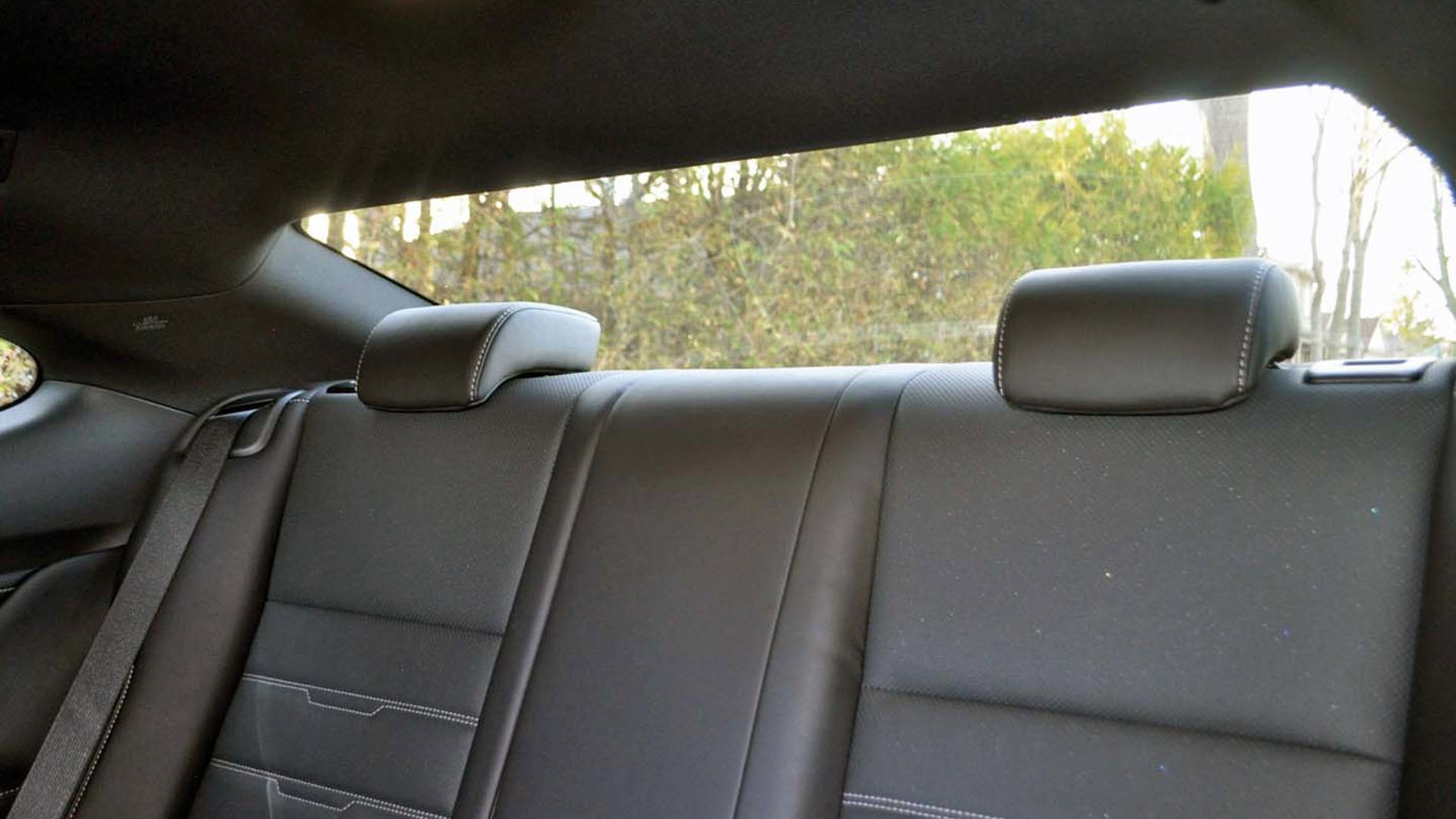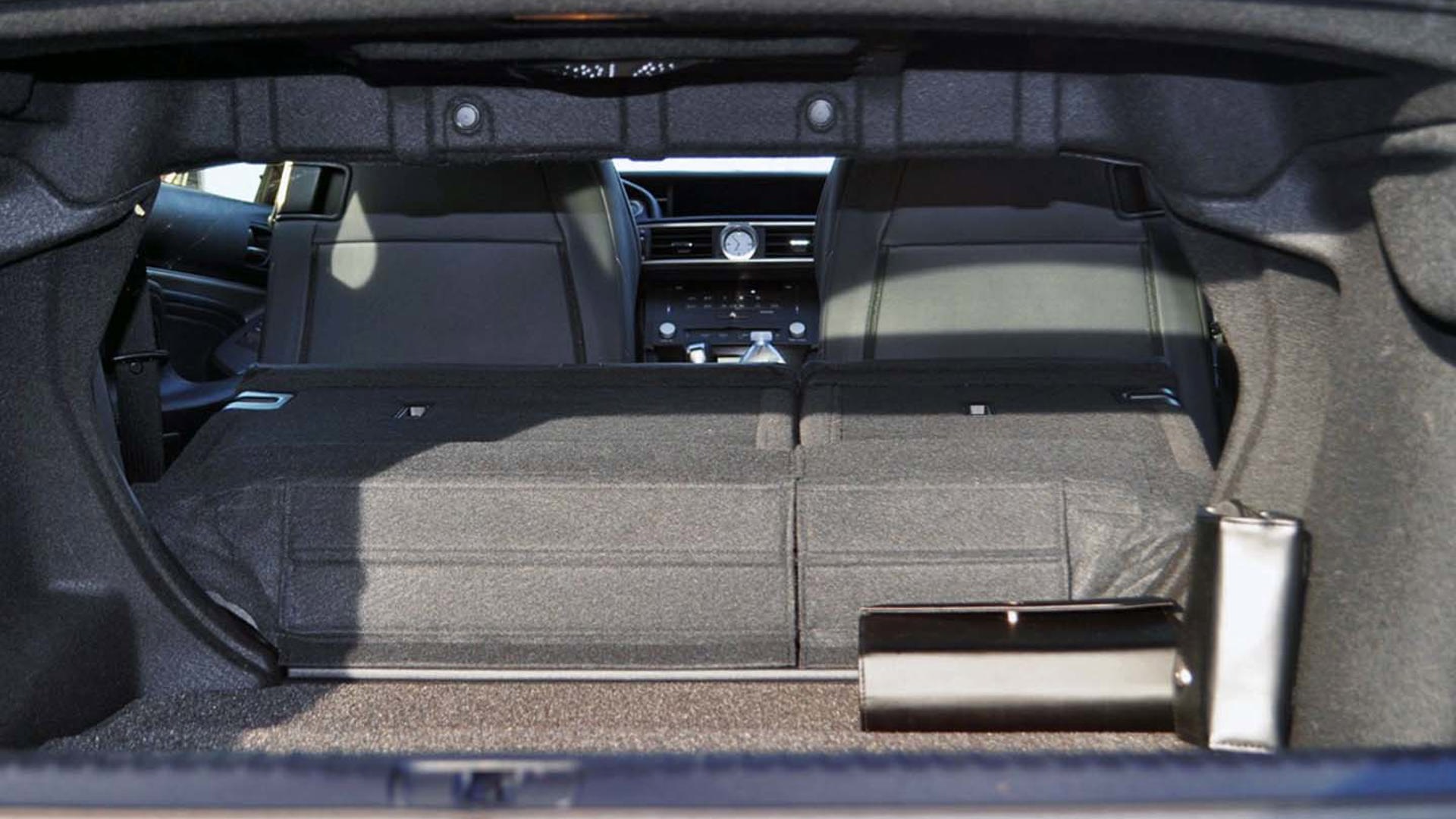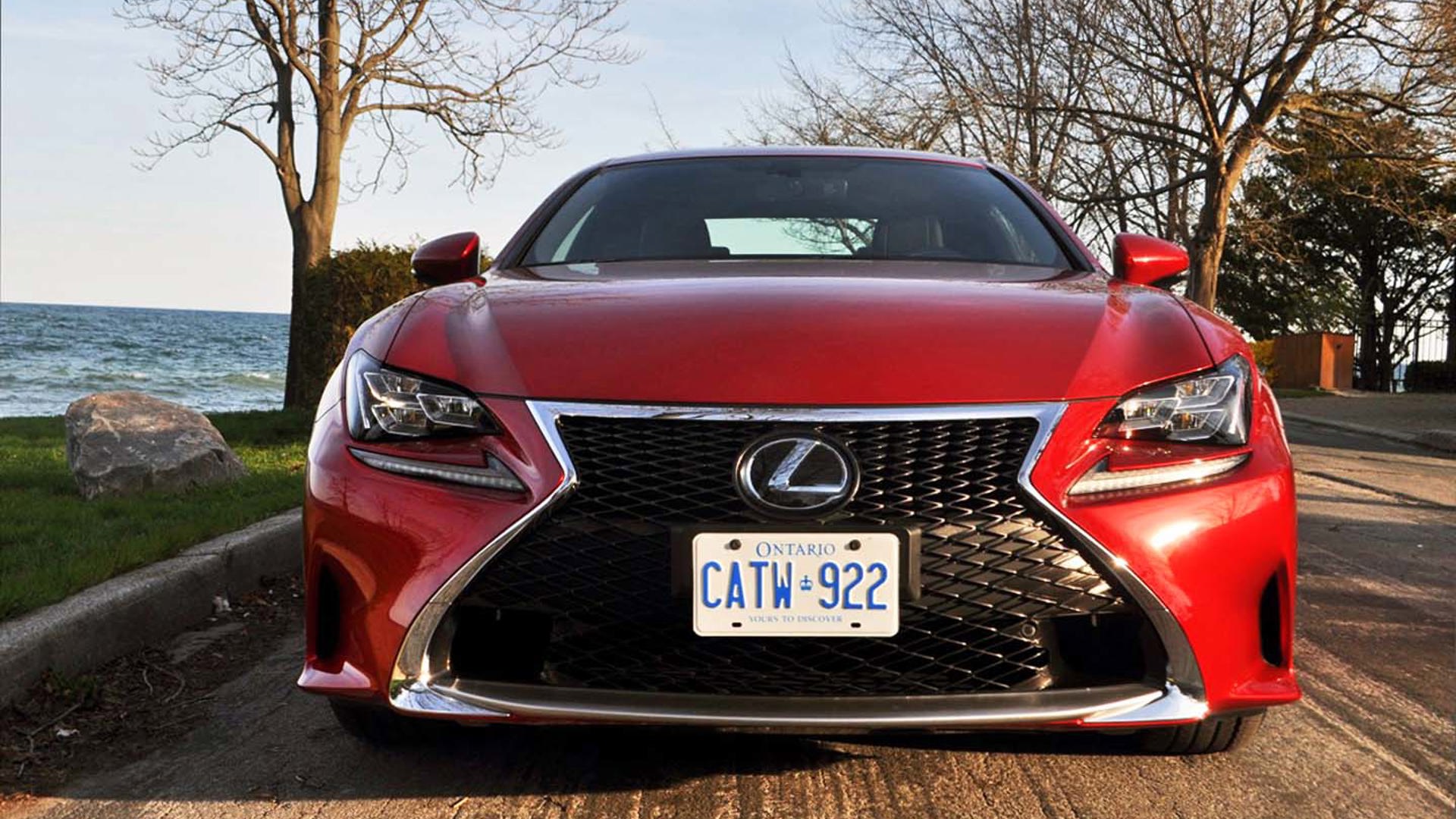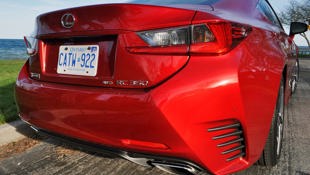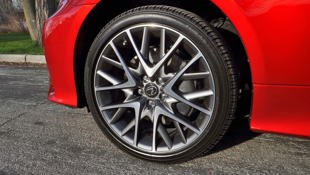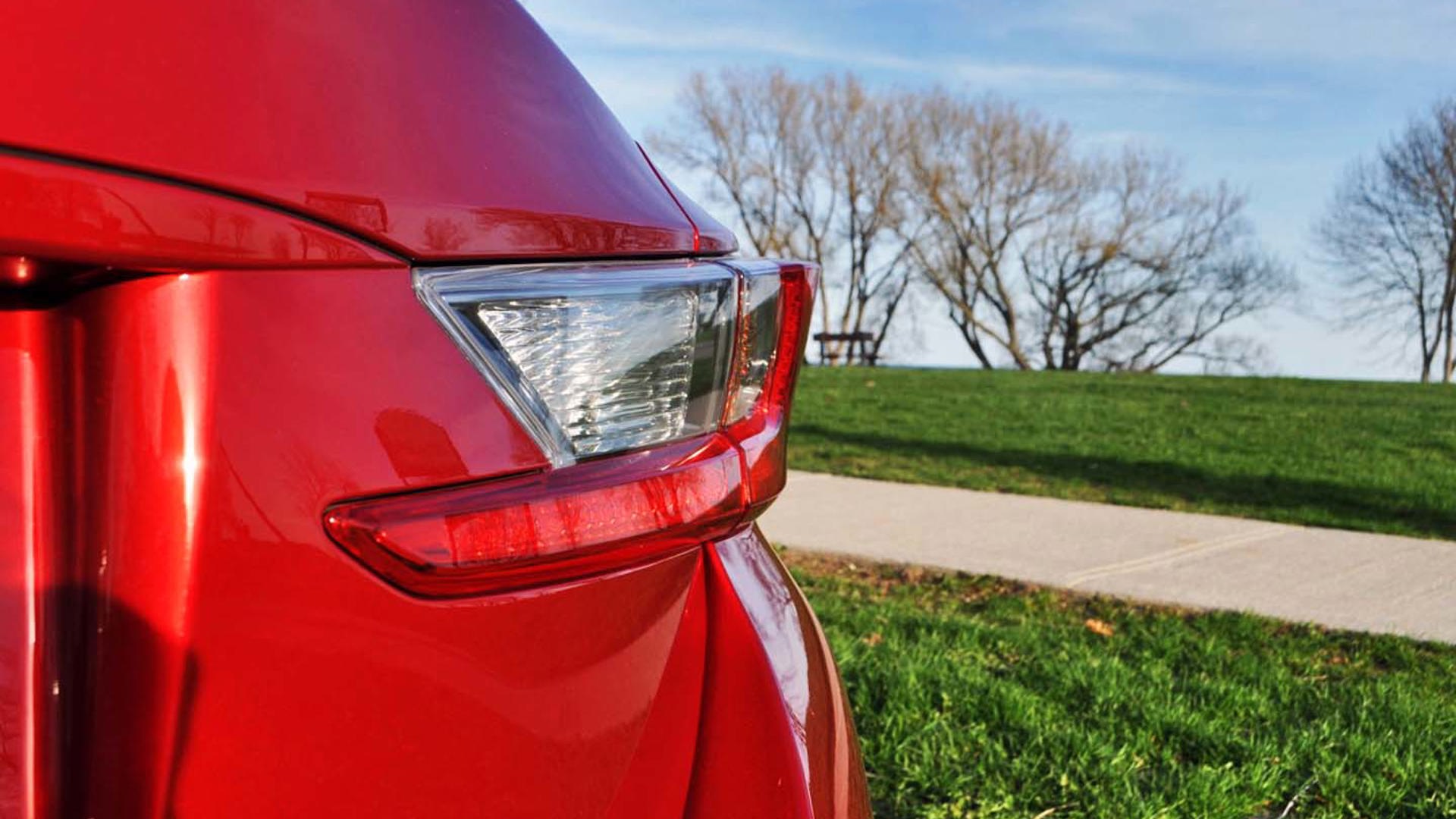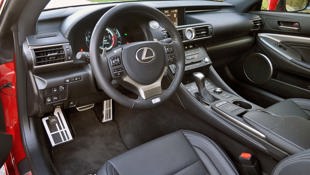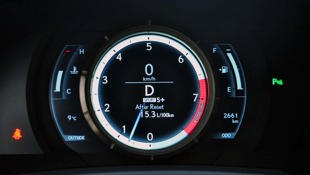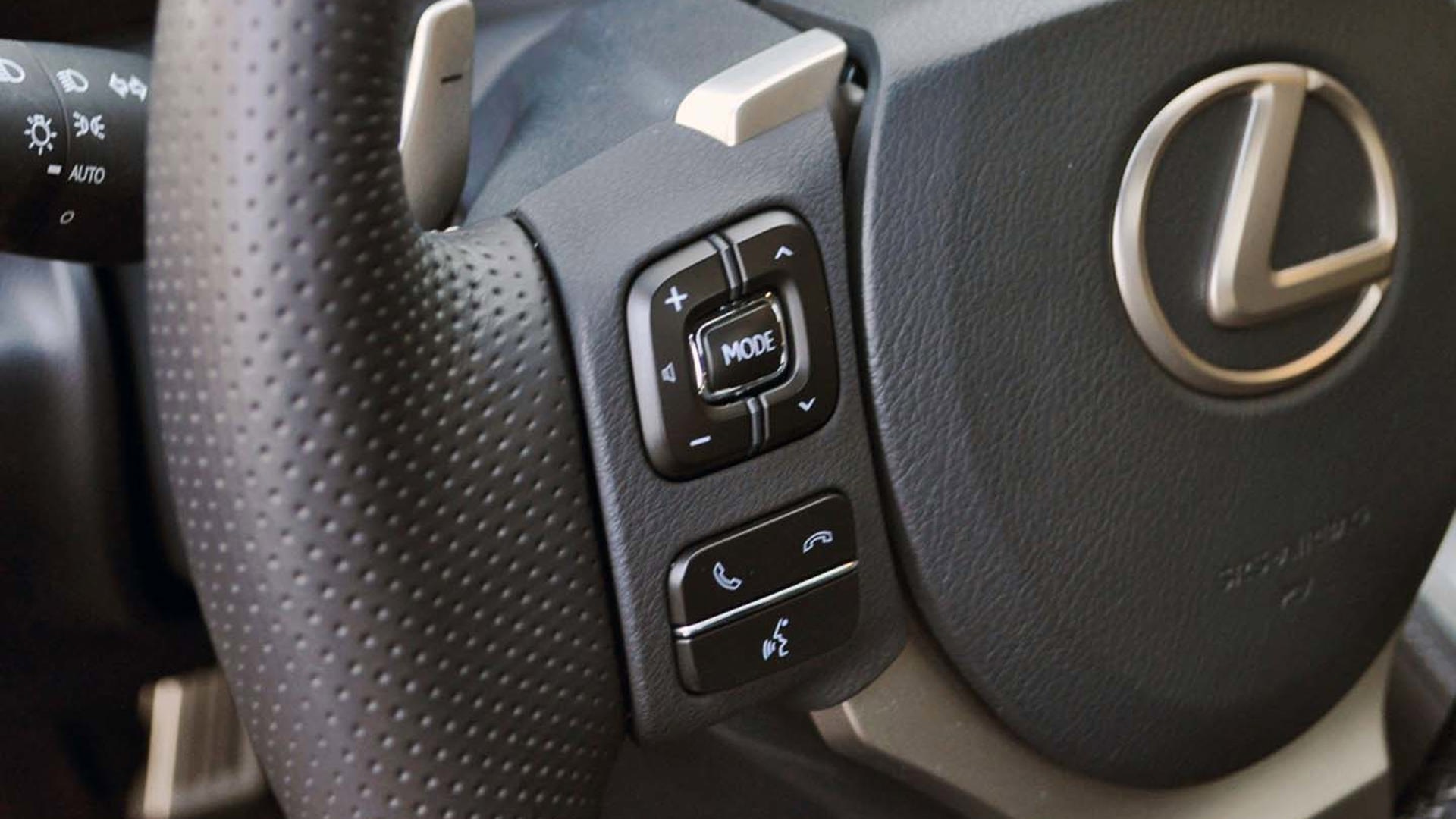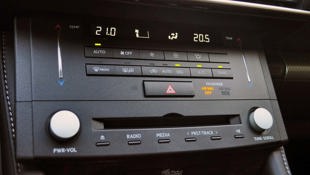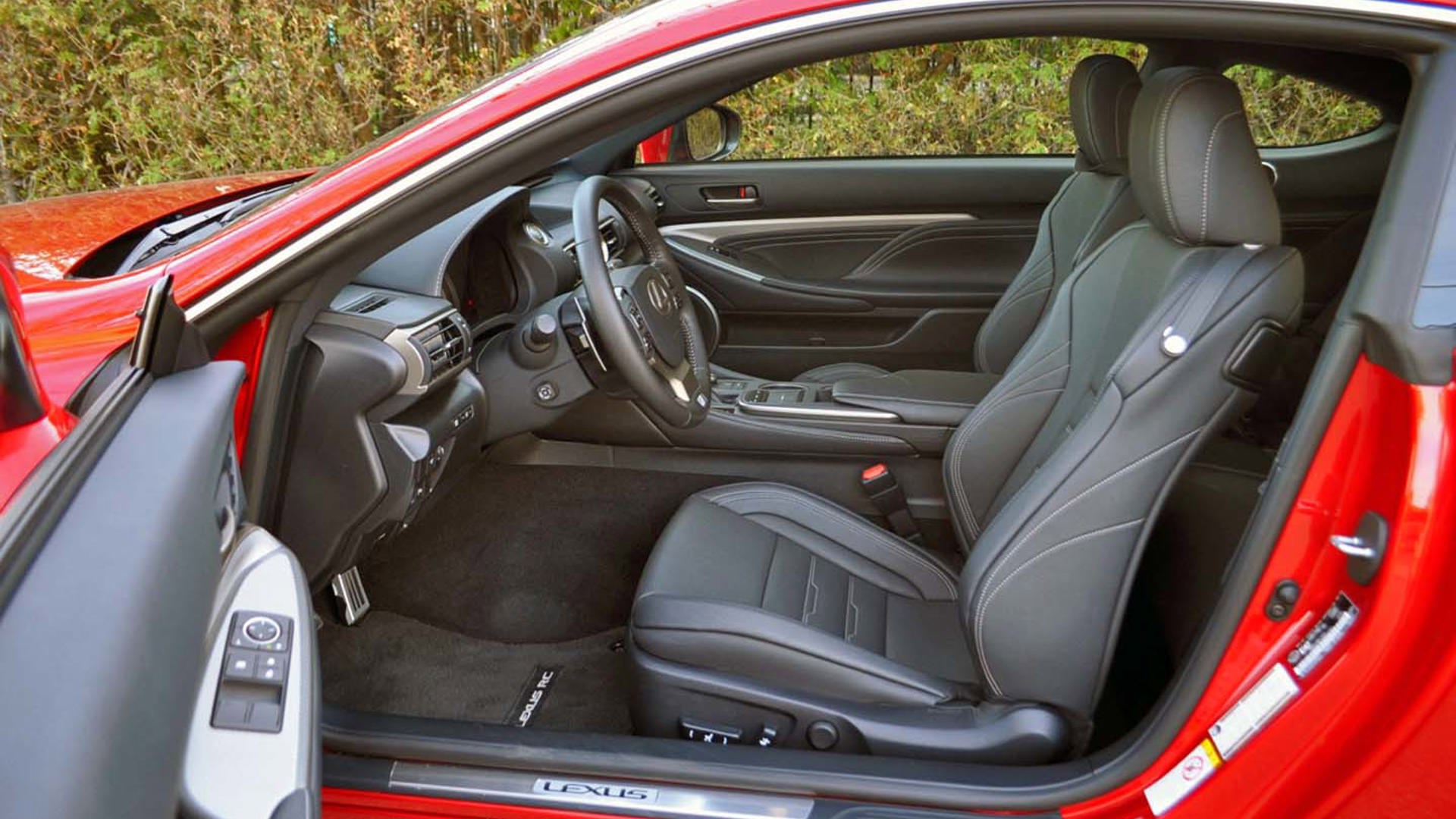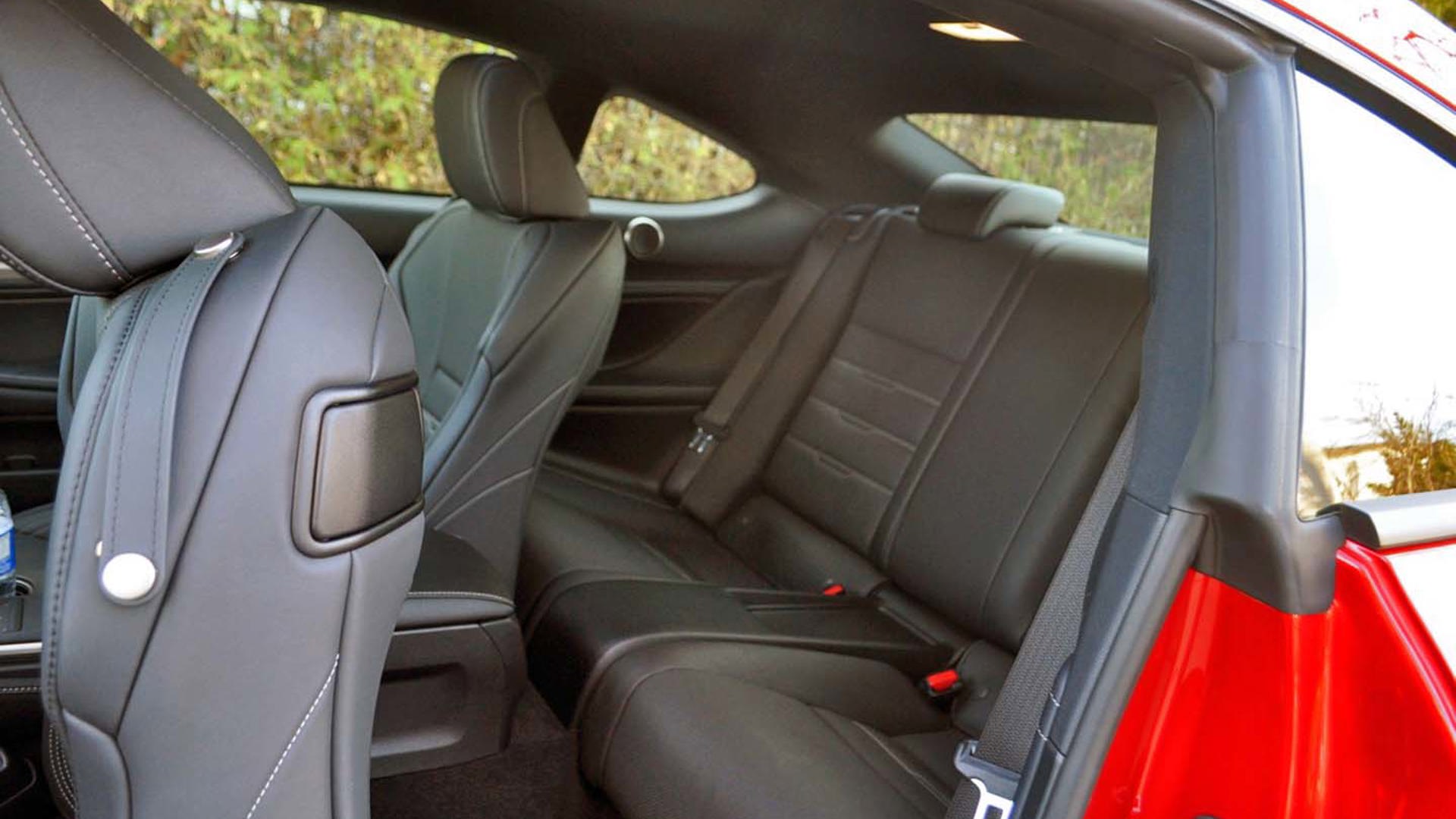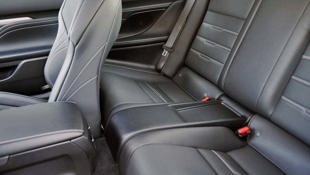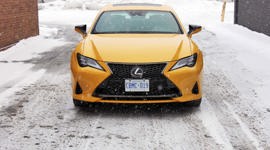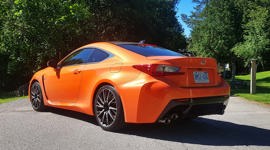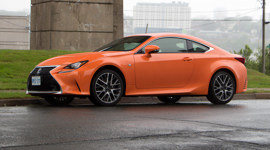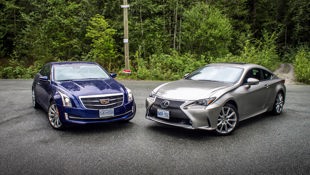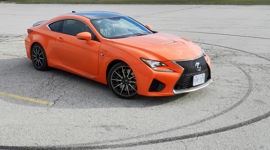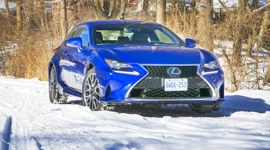 AutoTrader SCORE
AutoTrader SCORE
-
STYLING9/10
-
Safety9/10
-
PRACTICALITY8/10
-
USER-FRIENDLINESS7/10
-
FEATURES8/10
-
POWER8/10
-
COMFORT9/10
-
DRIVING FEEL8/10
-
FUEL ECONOMY7/10
-
VALUE8/10
The accountants at Lexus should take just as much credit for the super sleek design of the RC Coupes as the artists who crafted its postmodern yet elegant silhouette. Because it’s those typically cost-conscious management types that approved the expensive tooling changes required for those unique looks, with lines that resemble little else in the Lexus product range. Except perhaps the larger and super sexy Lexus LC coupe – an even more sensuously designed Lexus luxury coupe (hence LC) priced up in the six-figure stratosphere – a resemblance that is clearly very intentional.
You’re never uncomfortable in this car
Now contrast the RC’s approach with the strategy of its compact-ish luxury coupe competition. All of these leather-lined two-doors are built using the same architectural platforms as each respective brand’s compact sedan – the IS sedan, for Lexus. Which is fiscally responsible, no doubt, but stylistically questionable. Because what ends up happening is that the two-door versions of the Mercedes-Benz C-Class, BMW 3 Series and Audi A4 end up looking like a sportily tweaked sedan with its rear doors artfully shorn off.
Even if BMW and Audi try to not-so-subtly deflect some of those potential comparisons by identifying the coupes with different model numbers.
Granted, not all of the RC’s competitors go this route. The all-new Infiniti Q60 Coupe is also notably different from its Q50 sedan, and a visually arresting design itself. Though some folks aren’t crazy about the gaping Predator-like grille that dominates the RC’s front end, you have to give the entire management team kudos for the RC’s clear all-out effort at automotive haute couture.
That is, on the outside.
Inside, the RC is less successful, stylistically and ergonomically
Once you move to the interior, it’s quite a different story, sadly. Here the differences with the IS are less pronounced, which would be fine if the IS interior were a marvel of opulent luxury or ergonomic user-friendliness.
It is neither.
Let’s start with the luxury part. There’s no doubt that the RC offers a comfortable and well-appointed upscale cabin. Standard features on even the base RC 300 AWD models (which start at an MSRP of $48,850) include a 10-speaker stereo, a keyless Smart Key entry system, power-adjustable and heated front seats, heated steering wheel, two USB inputs, paddle shifters, and a HomeLink universal garage-door opener.
A 2017 RC 350 AWD like the one I tested starts at $59,050, which adds niceties such as front and rear adaptive suspension systems, 19-inch wheels, a navigation system, driver’s seat memory, blind-spot monitoring, cooled front seats, and a digital instrument cluster inspired by the dearly departed Lexus LFA supercar. Add in this tester’s $3,300 F Sport Series 2 option package (upping the ante to a 17-speaker Mark Levinson sound system, dynamic radar cruise control, and an active parking assist system) and special paint, this tester topped out at an as tested price of $65,171.
So, very reasonable in this luxury segment, where options can sometimes tack on 15 or 20 grand onto a purchase, especially considering the power and performance upgrades of the 307 hp RC 350 as well over the 255 hp RC 300.
Yet after sitting in a few of the RC’s competitors this year, one can’t help feeling that the extra design effort and expense spent outside was not fully extended to the interior. There’s not a lot of colour besides basic black outside of a few metallic elements (pedals mainly), with notably hard plastics on the lower door panels and glovebox area. Sure, there is some fine stitched leatherette detailing on the dashtop, centre tunnel, and centre console, but many of the traditional climate control hard buttons will feel familiar from various Toyota models.
But what’s worse is that one sometimes wishes for simpler Toyota controls. Case in point, the Lexus-specific vertical temperature slider, which is a cross between a hard button and a touch sensitive bar. This means you have to look down and peer at the temperature readouts inconveniently nestled under the centre vents to see if your changes took – or went too extreme if you happened to hit a bump.
Hitting bumps also becomes extra noticeable when trying to use Lexus’ touchpad system mounted between the seats. Lexus is one of the few luxury brands that haven’t gone to a circular puck-like controller to twist and push between different menus and options. Nope, here the touchpad works similar to that on a laptop but with added haptic feedback, though the cursor-like pointer on the screen seems to constantly jump away from whatever it is you’d like to select.
One quickly adapts to try and use the handy steering wheel mounted buttons and voice controls instead. Ironically the RC 350 has a circular controller for its Drive Mode Select system that can be rotated and pushed right near that cursed touchpad, but it teasingly adjusts only the RC’s dynamic settings between Comfort, Sport, and Normal modes (and Sport+ in F-Sport models). It really is an ergonomic disappointment overall, from a company that clearly knows how to do driver-friendly controls very well.
Luxurious sportiness still the order of the day, in that order
Those different drive modes certainly change the character of the RC 350, especially when moving from the default Normal up to Sport+, where the active sound control (yes, fake piped-in engine noise) pumps up the volume most. It’s a fairly impressive system, as it is relatively invisible where the real engine noise stops and the simulated one begins. The adaptive suspension also adapts to sharper handling in either S mode, with less perceived body roll from the relatively hefty luxury coupe, though you’re still never uncomfortable in this car.
Scratch that, okay, you’re never uncomfortable in this car if you’re in one of the two seats up front. If you’ve been relegated to either of the tiny rear seats, through some cruel bet you lost perhaps or some seismic weather activity that has you running for cover, you’ll want to be extra kind to the person sitting in front of you.
That lack of legroom and headroom is ironic, as there’s a high-mounted lever to easily fold the front seats forward when needed, but reality dictates this be more to throw your gym bag or suitcase than to fold a human with actual legs back there. But on the plus-side practicality-wise, the rear cargo area has a wide opening and holds a decent (for a two-door) 295 litres. That is normally not much, but considering the seats that fold down, there will certainly be a way to transport your clubs to and from each round of golf with no issues.
From the driver’s seat, this 3.5-litre V6 gave a good account of itself, with an overall quiet demeanour that could easily be turned up quickly by using the six-speed transmission’s shift paddles. Its 307 ponies arrive at 6,400 rpm, while its 277 lb-ft of torque come in at a more usable 4,800, providing for a fleet but not class-leading sprint from rest to 100 km/h in 6.3 seconds.
The RC is the only coupe in this class now to offer a V6 on even the base model, in a world where four-cylinder turbo entry engines are the norm, as is offered in the US on the RC, but not in Canada. Officially, both RC 300 as well as RC 350 models average the same fuel consumption: 11.0 L/100 km in combined city and highway driving, which is near the tail end of this segment. I saw much worse than that, with the trip computer telling me that I achieved closer to 15.3 litres per.
Rear drive is also not available in Canada with the RC, unless you move considerably up the RC food chain and opt for the V8-powered RC F, which starts just north of $85,000 for the 2017 model. For that cheddar, you’re receiving a 467 hp V8, unique styling and a legitimate BMW M4 rival.
Conclusion
Overall then, the 2017 Lexus RC 350 F Sport impresses most with its looks, then by its comfort and punchy V6 engine. It lags quite a bit in user-friendliness, with its touchpad ergonomics and tight rear-seat room, but it may be something owners may be willing to overlook just to park a similarly sharp-dressed RC in their driveway.
| Engine Displacement | 3.5L |
|---|---|
| Engine Cylinders | V6 |
| Peak Horsepower | 307 hp @ 6,400 rpm |
| Peak Torque | 277 lb-ft @ 4,800 rpm |
| Fuel Economy | 12.6/9.2/11.0 L/100 km cty/hwy/cmb |
| Cargo Space | 295 L |
| Model Tested | 2017 Lexus RC 350 AWD |
| Base Price | $59,250 |
| A/C Tax | $100 |
| Destination Fee | $2,045 |
| Price as Tested | $65,345 |
|
Optional Equipment
$3,950 – F Sport Series 2 Package (17-Speaker Mark Levinson Premium Audio System, Dynamic Radar Cruise Control, Intuitive Parking Assist , Pre Collision System) $3,300; Premium Paint Colour $650
|
|
